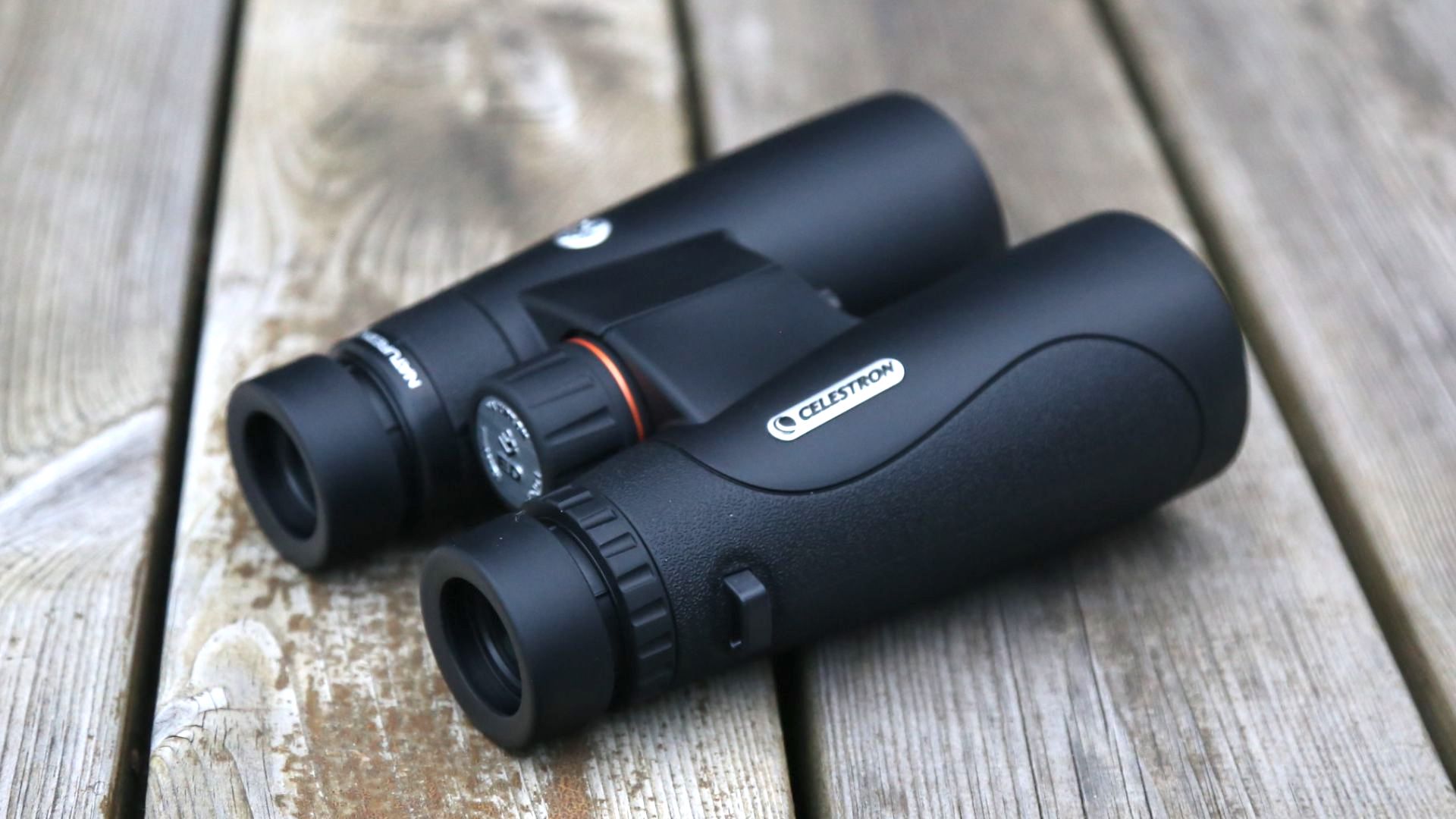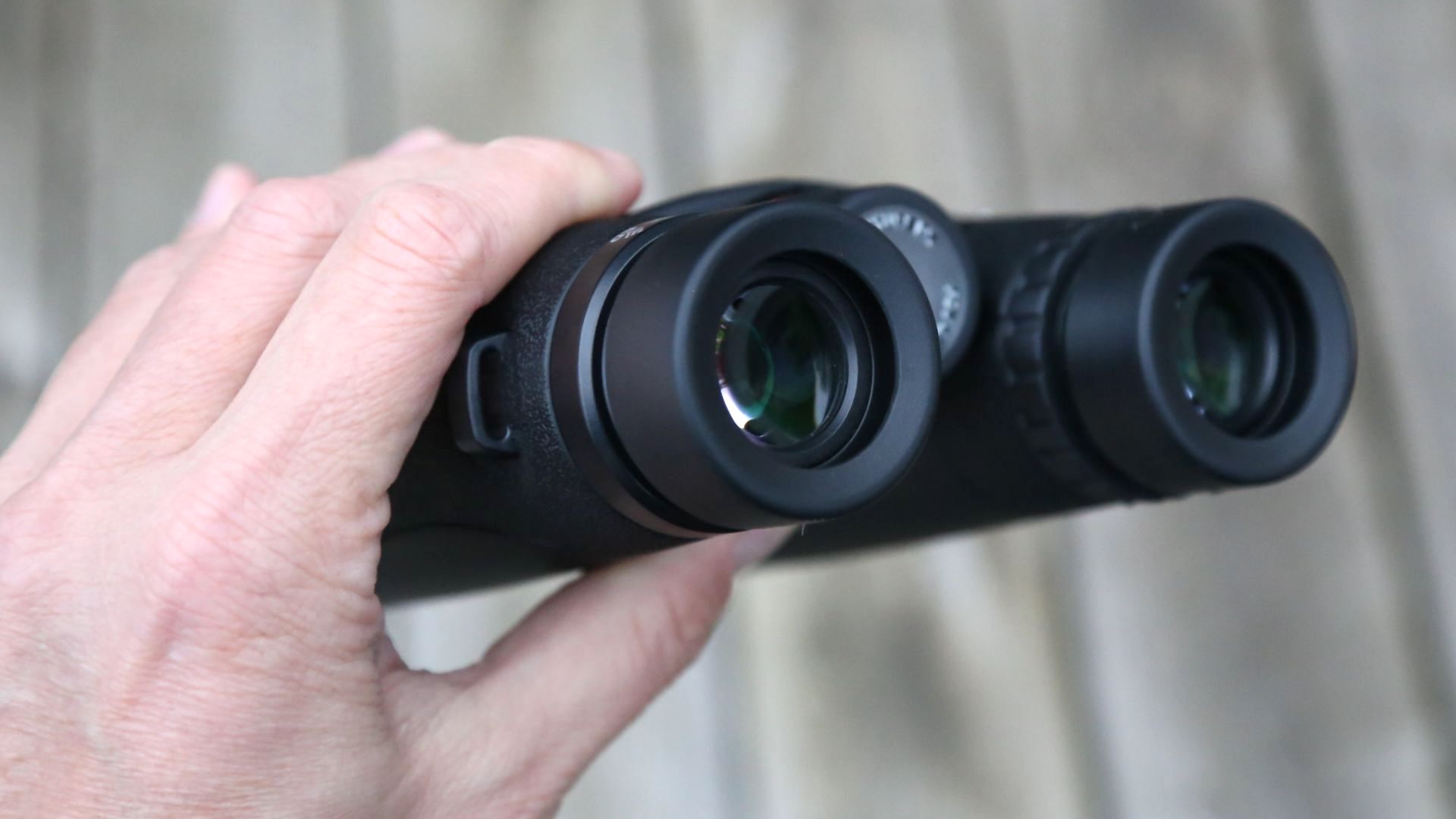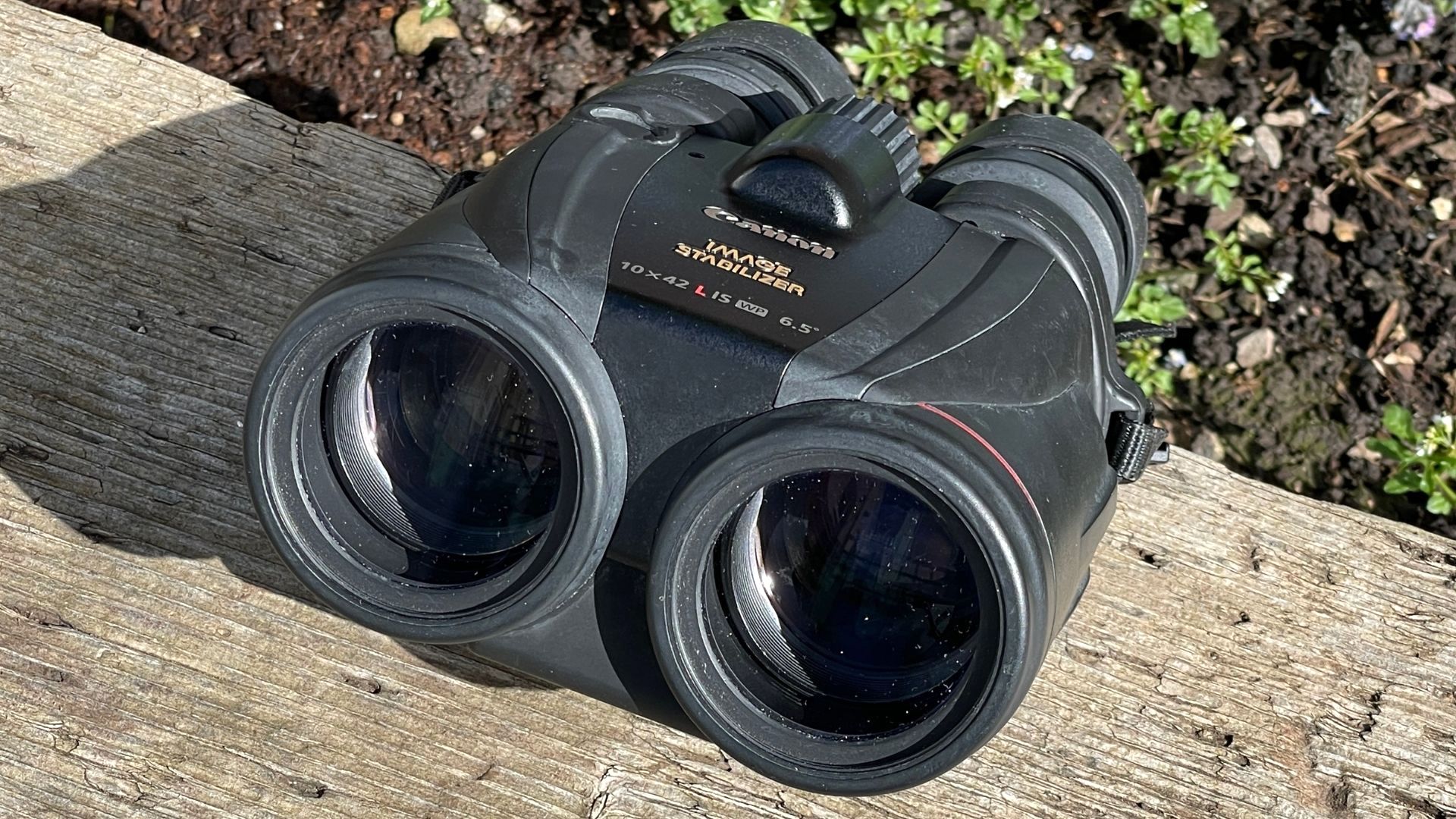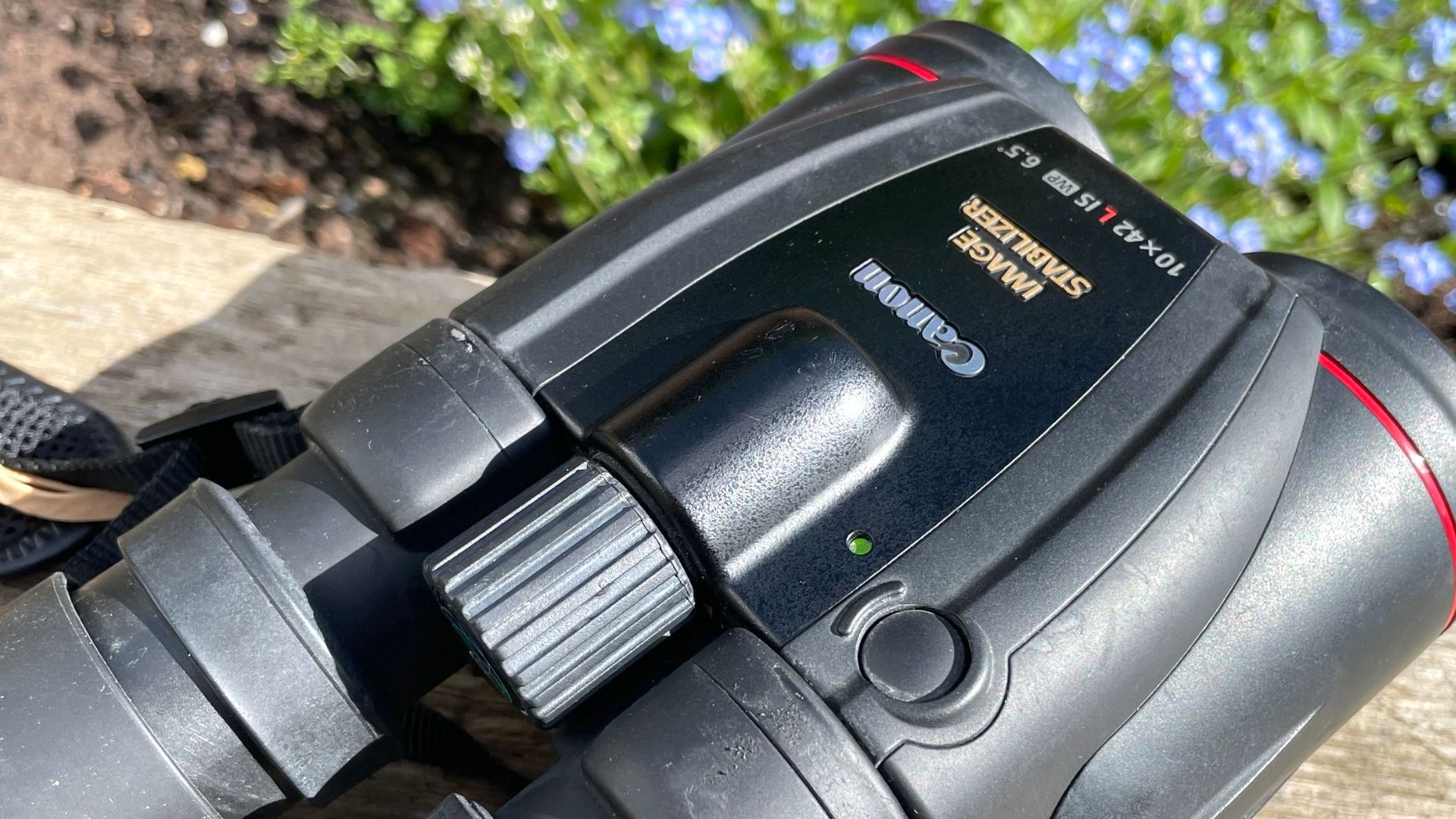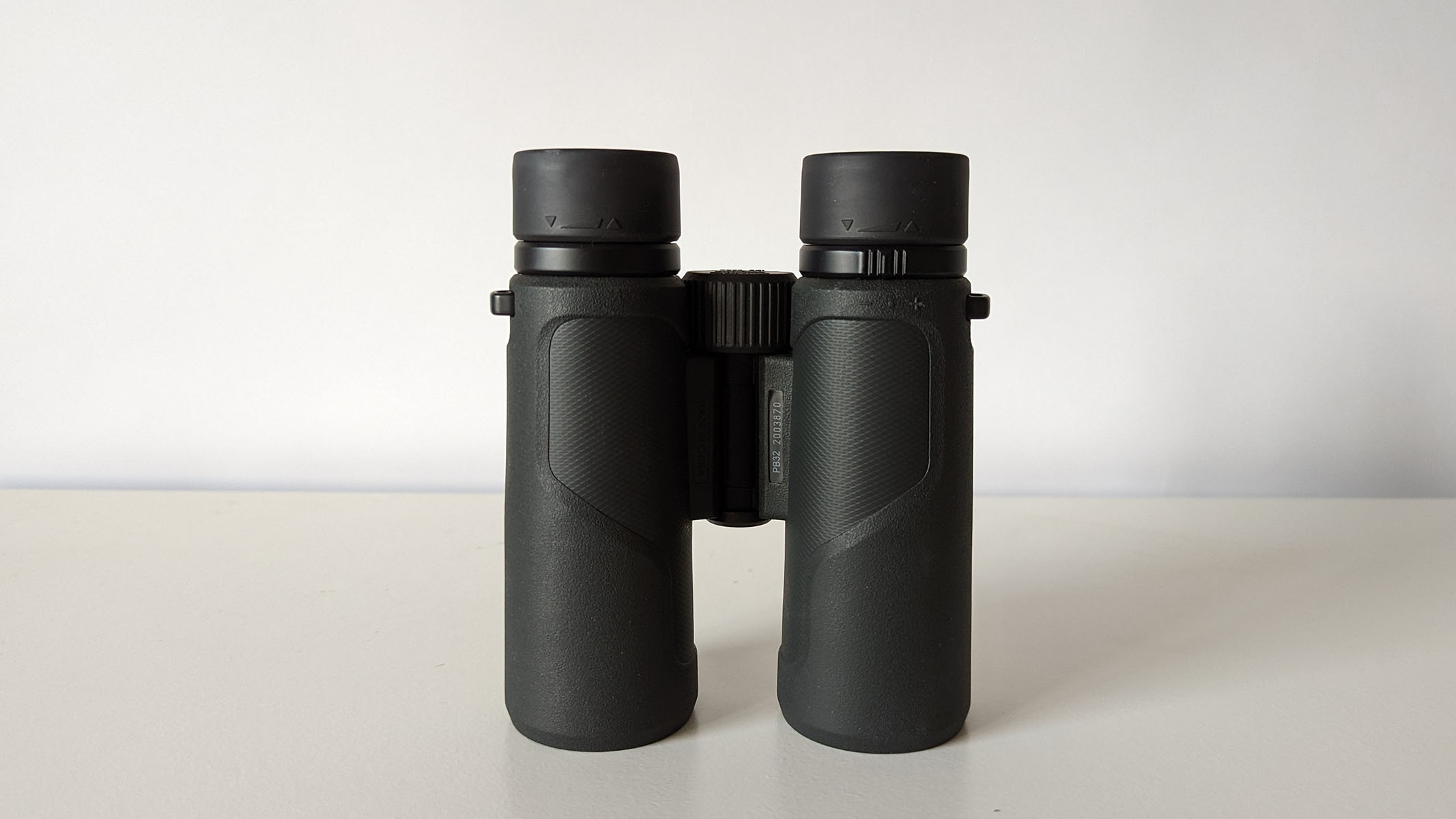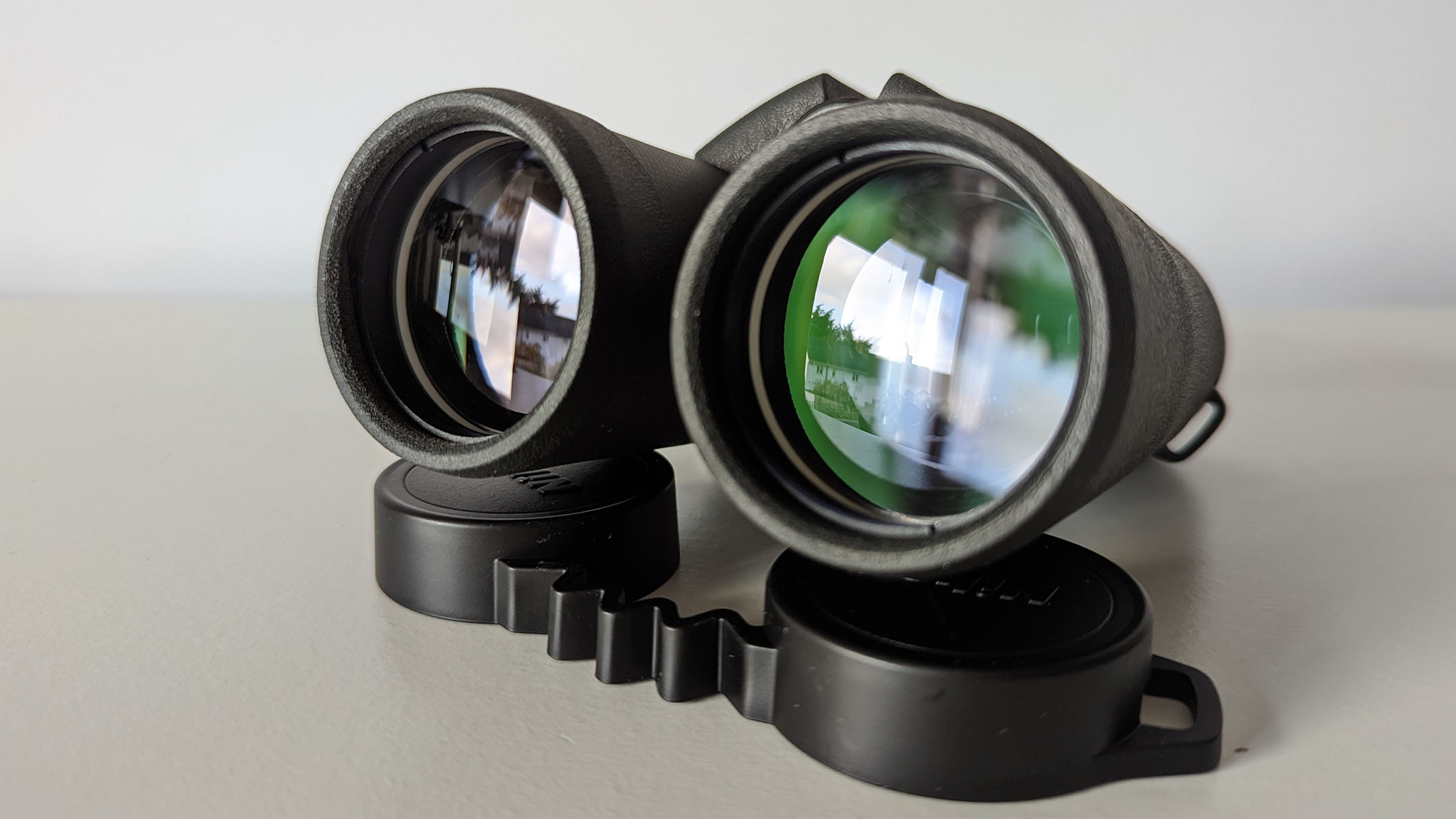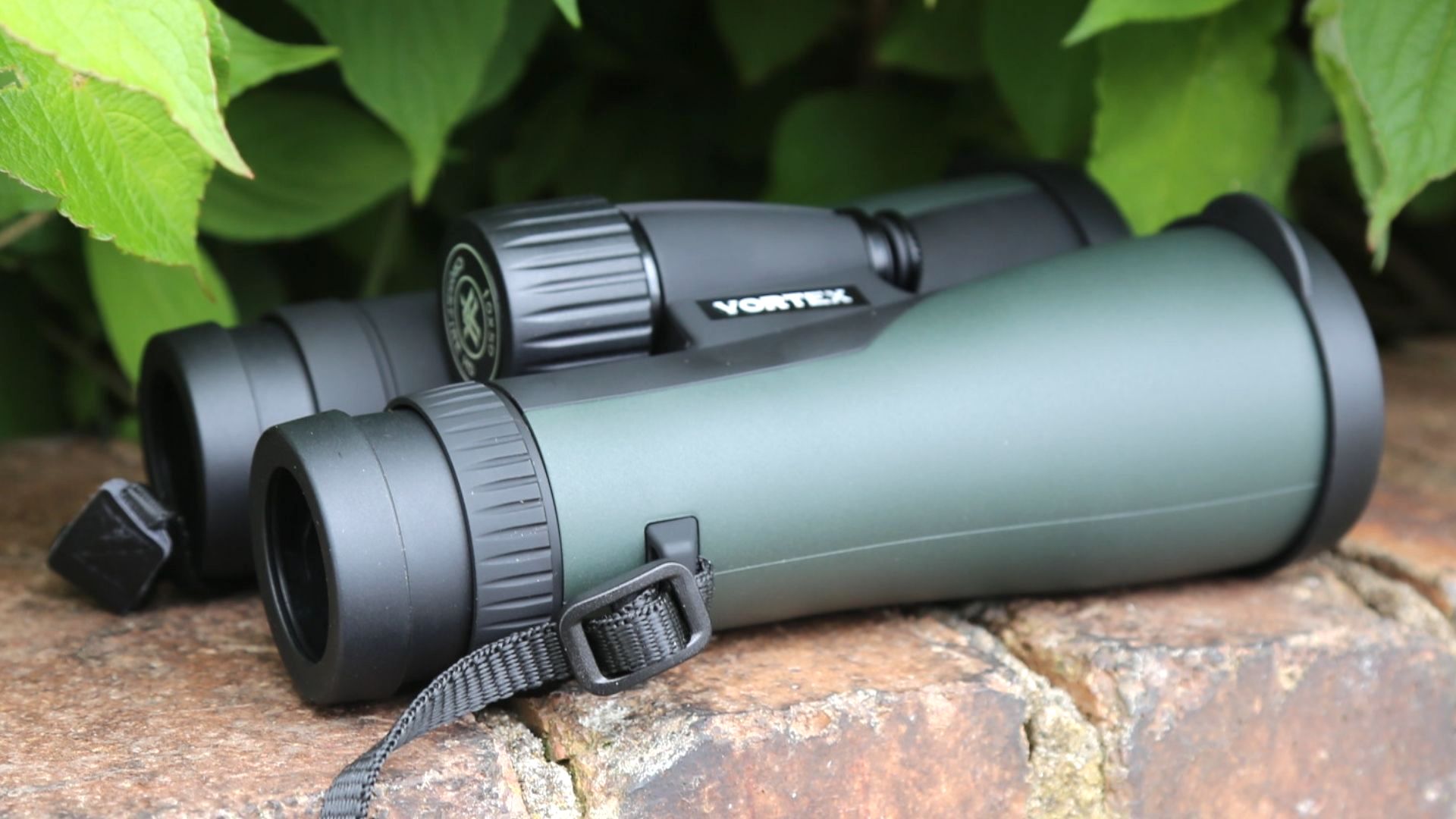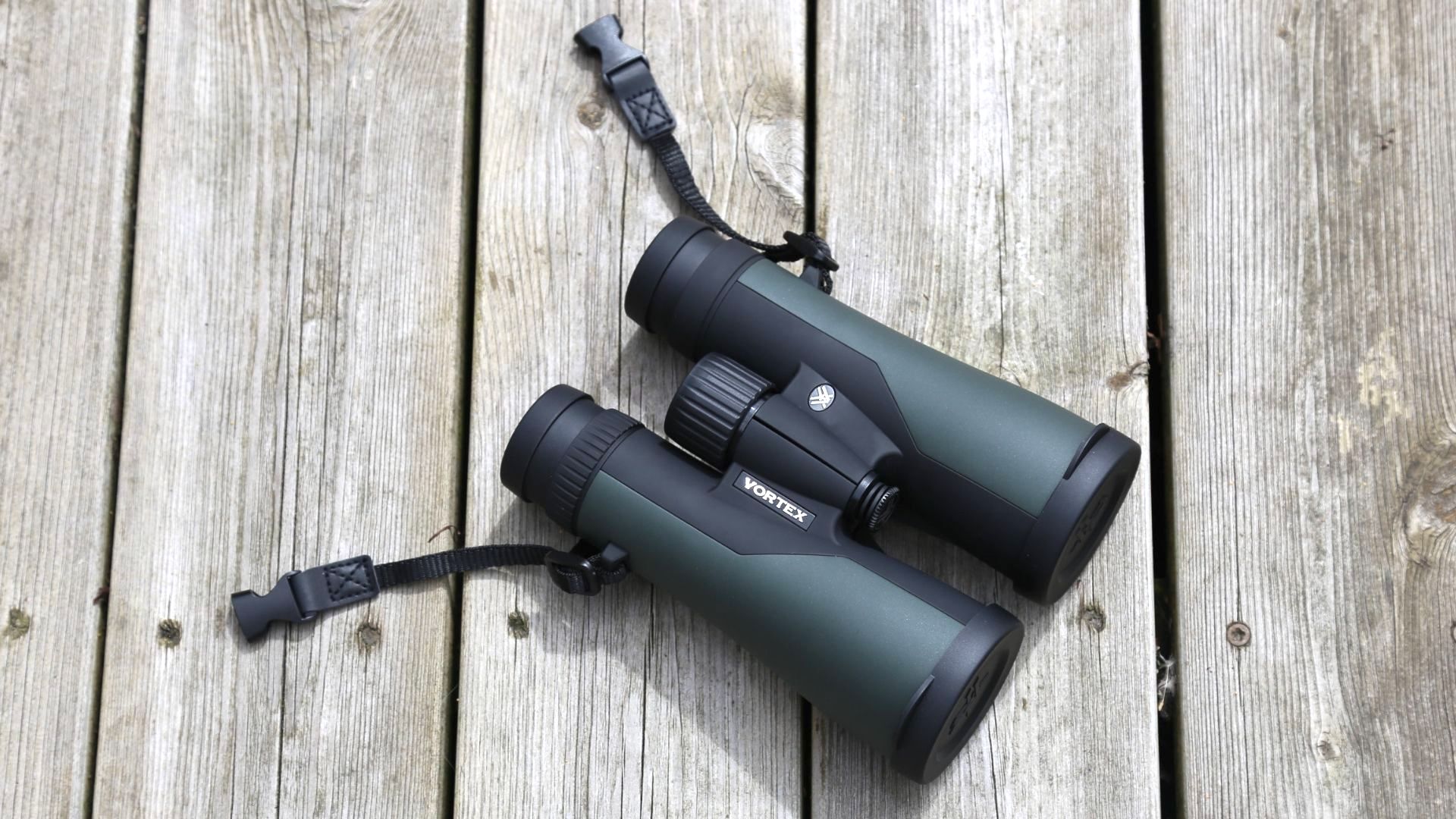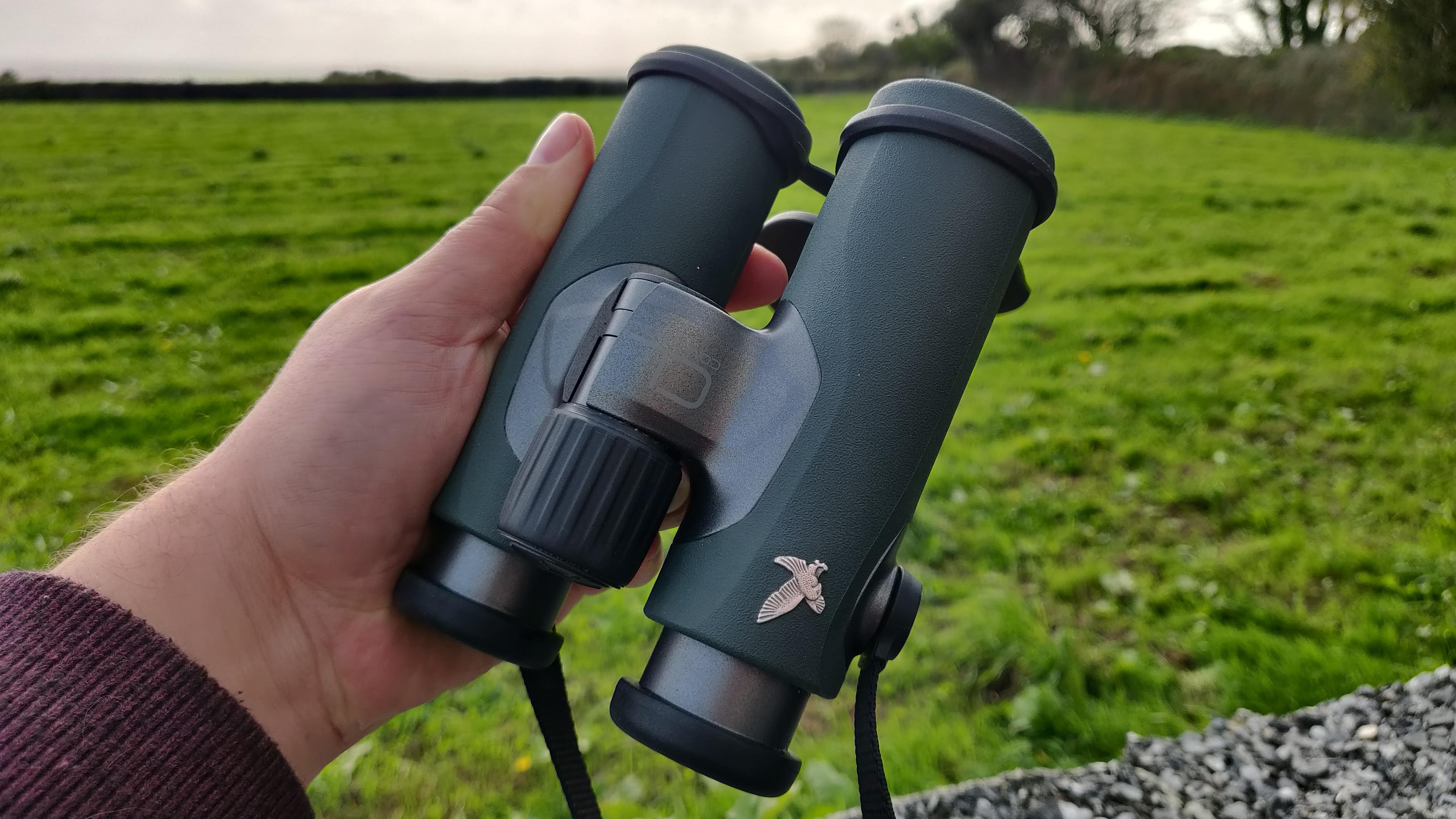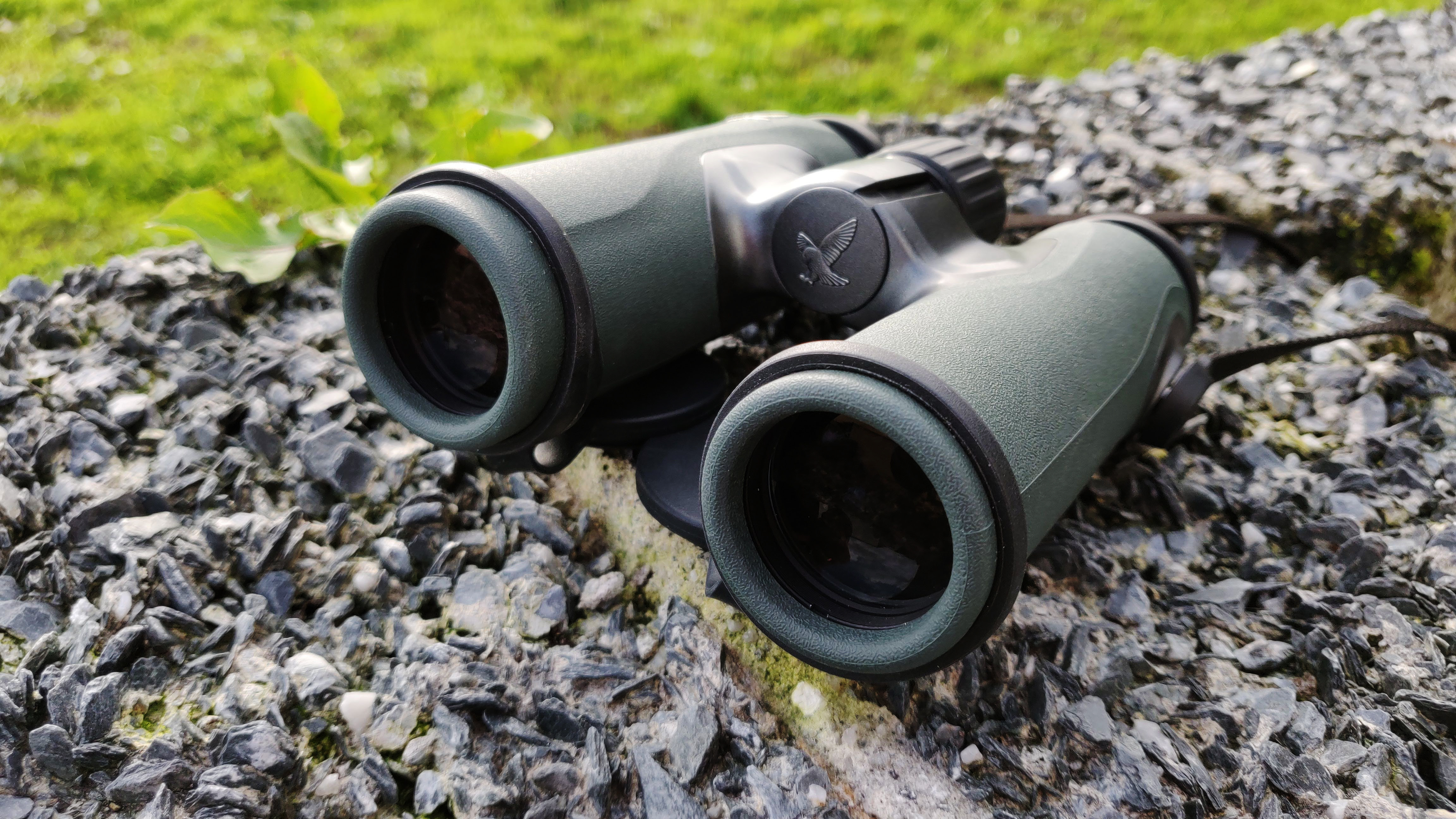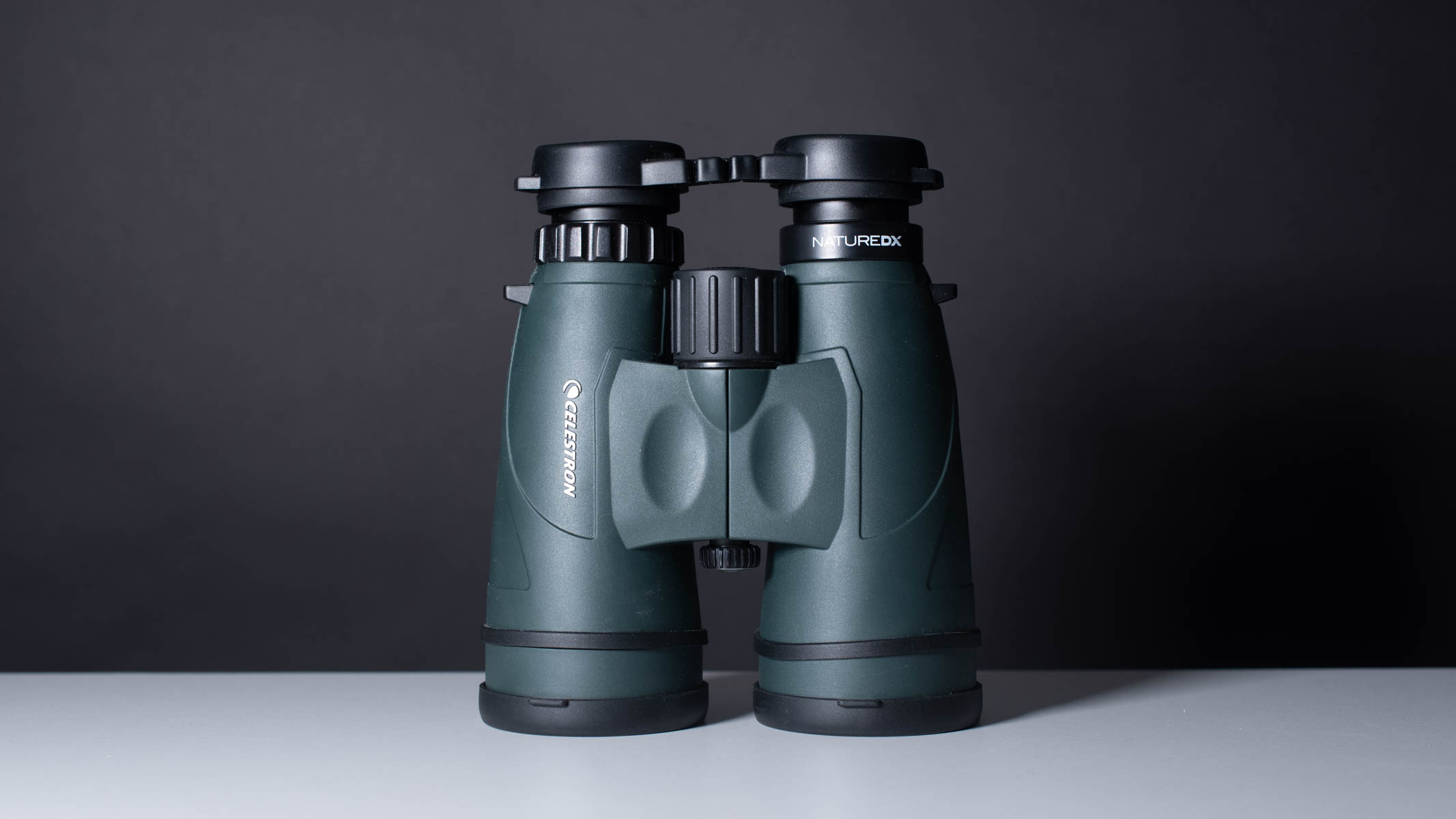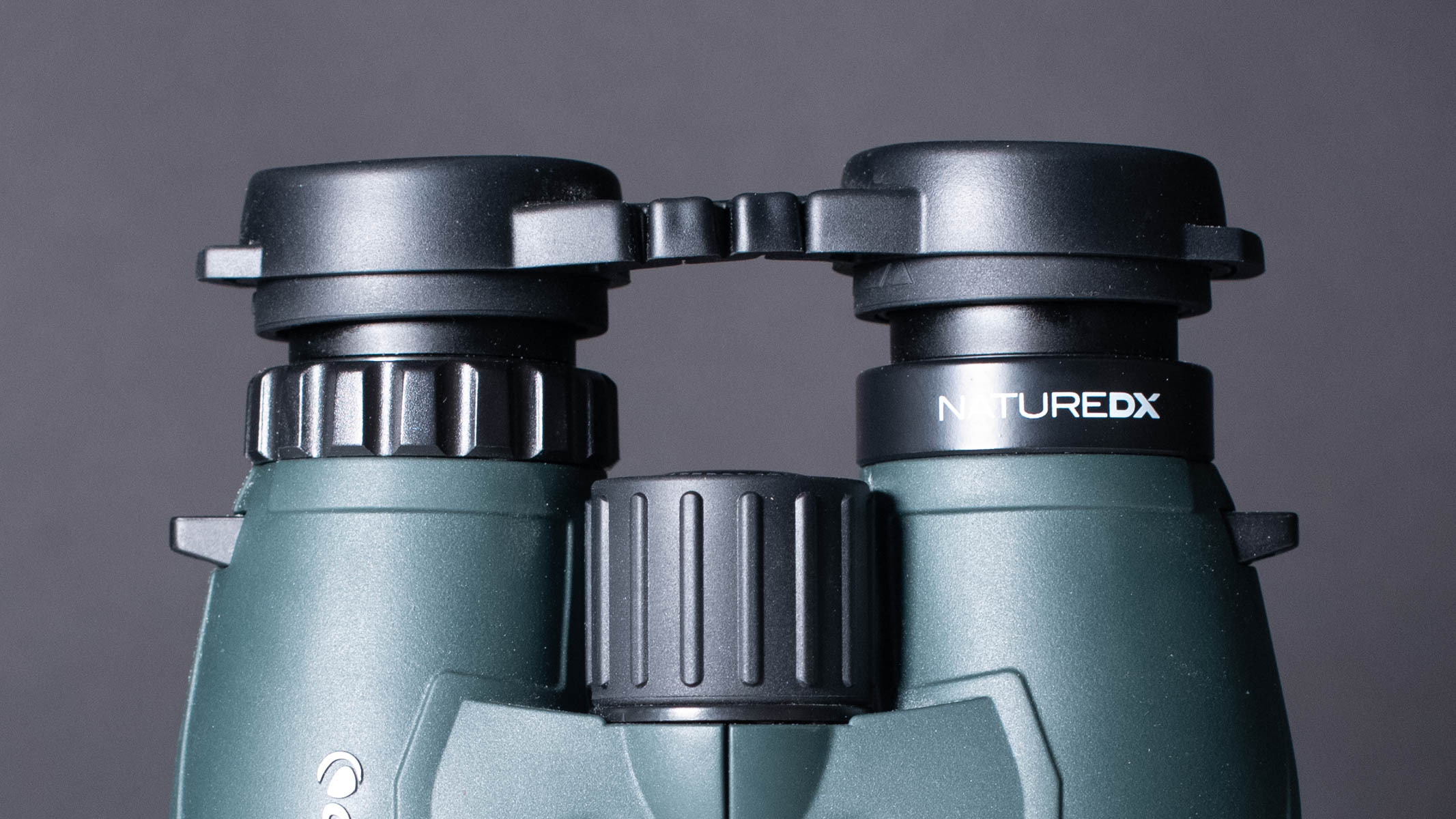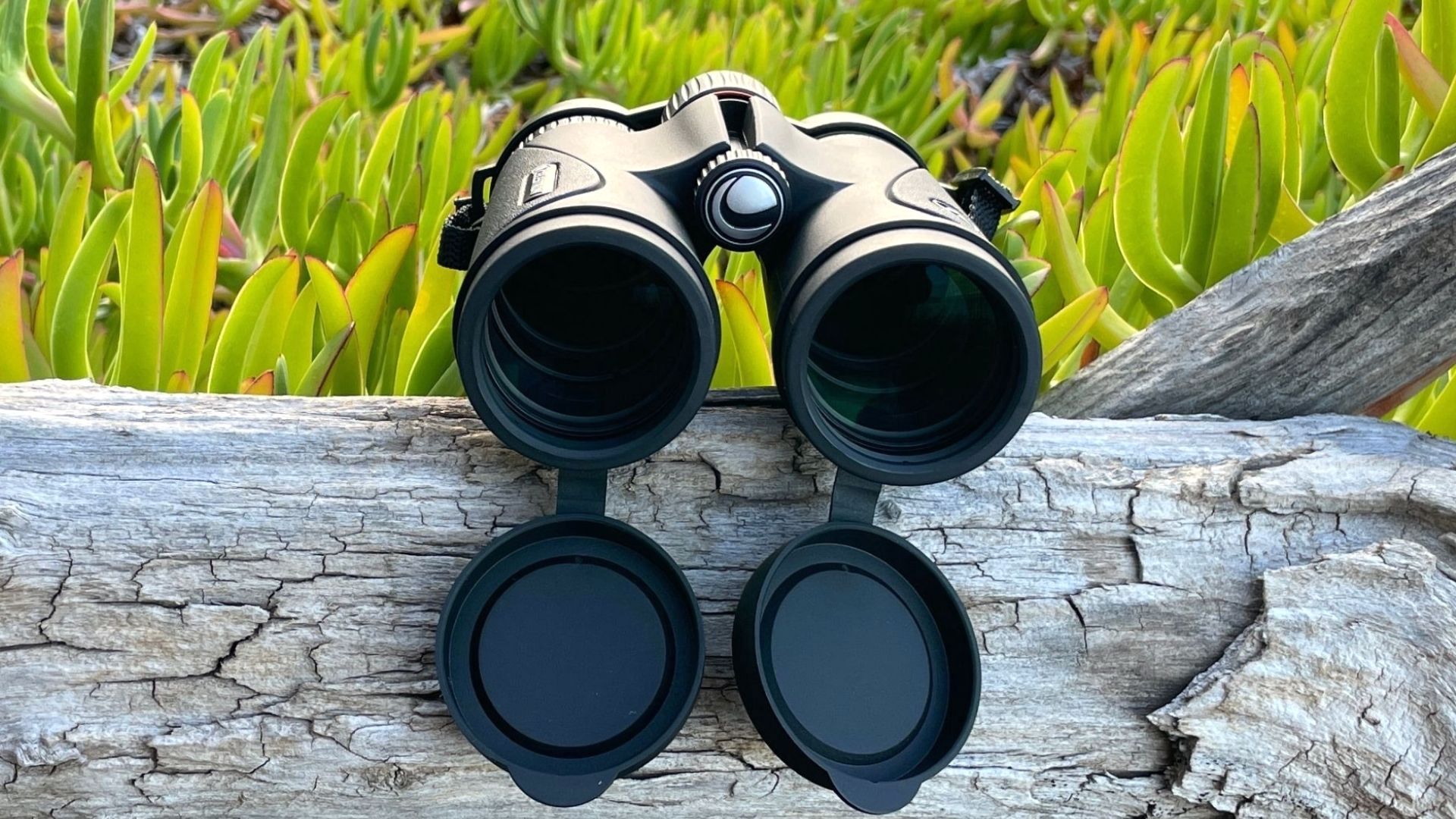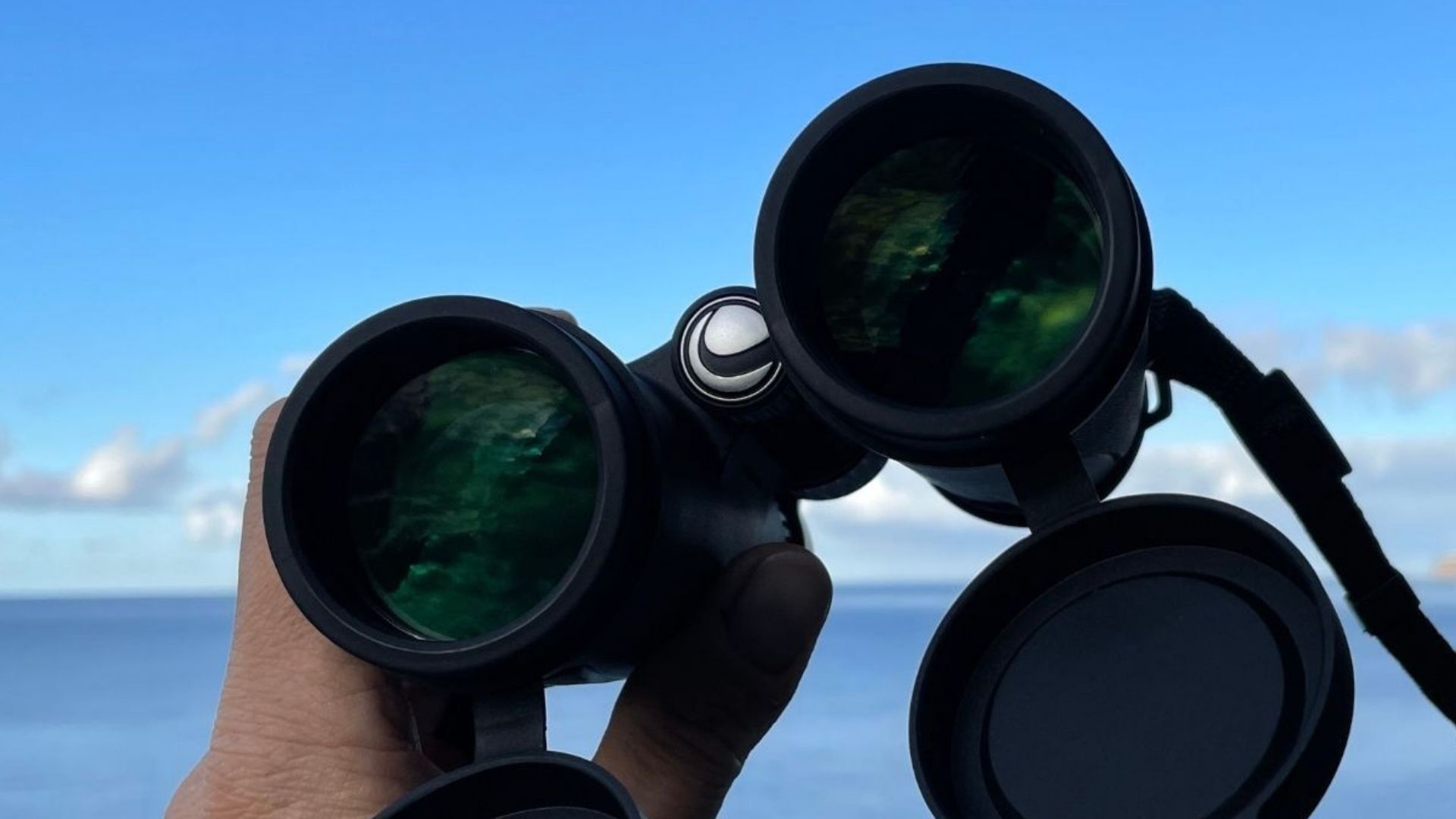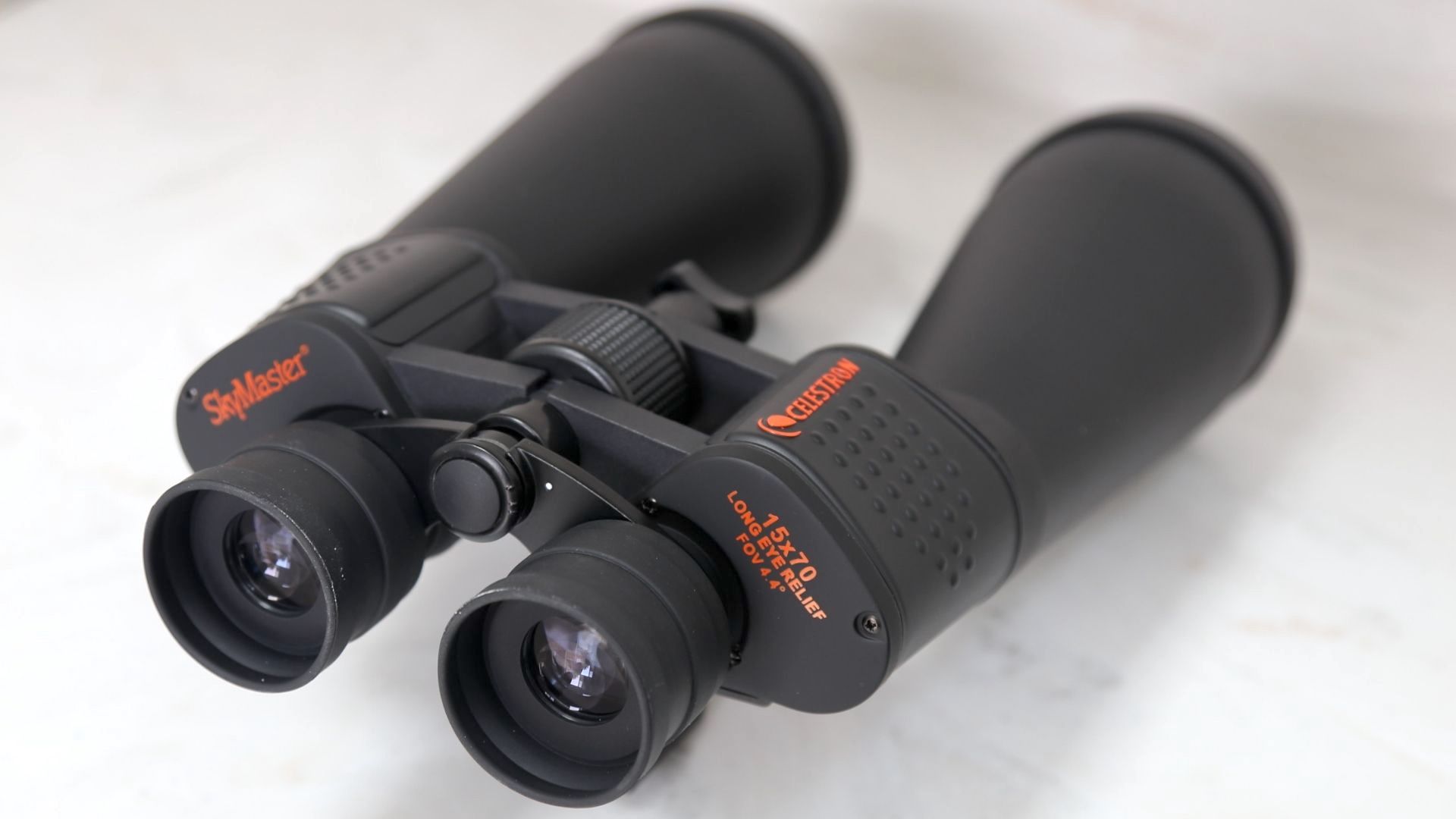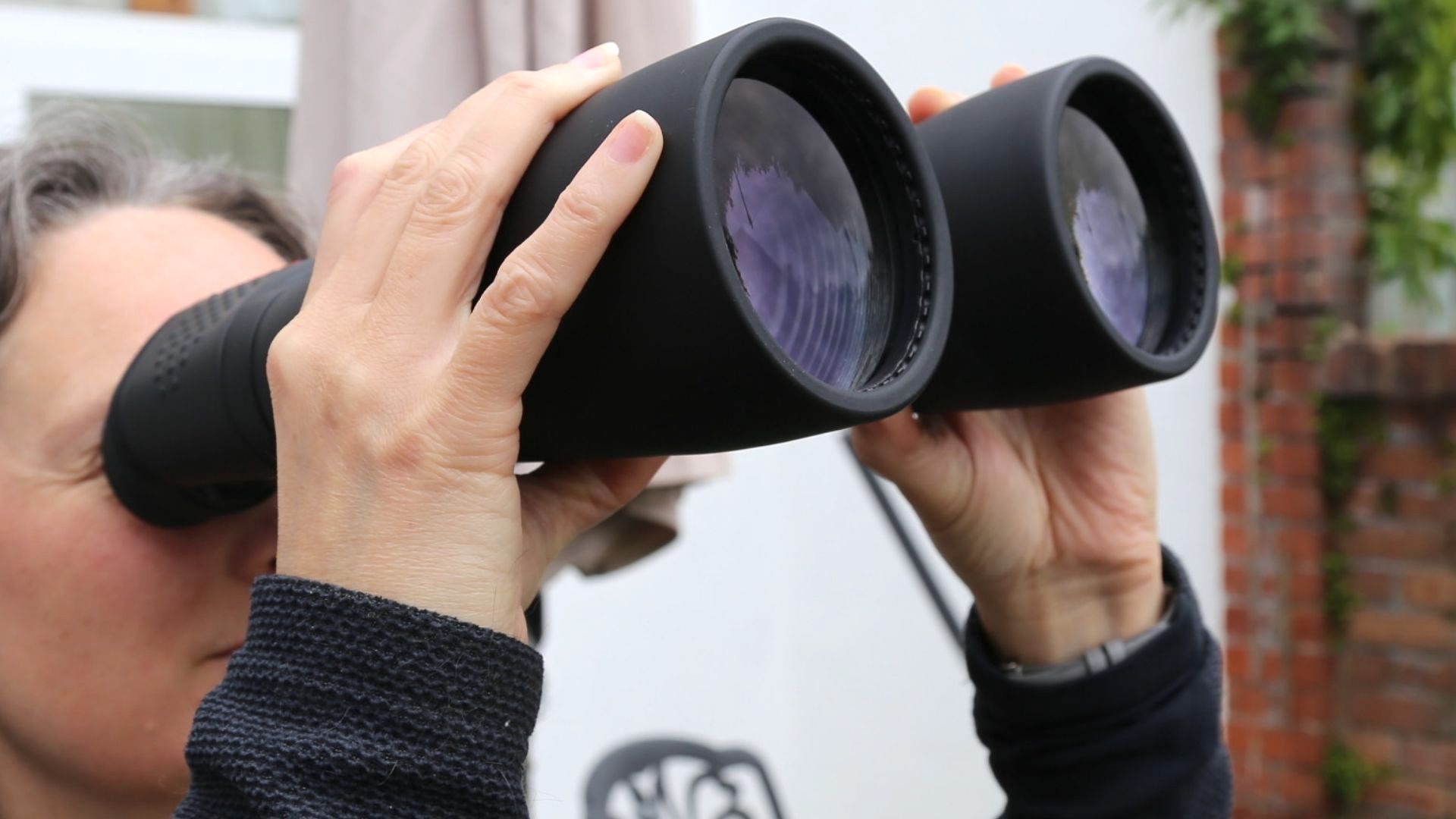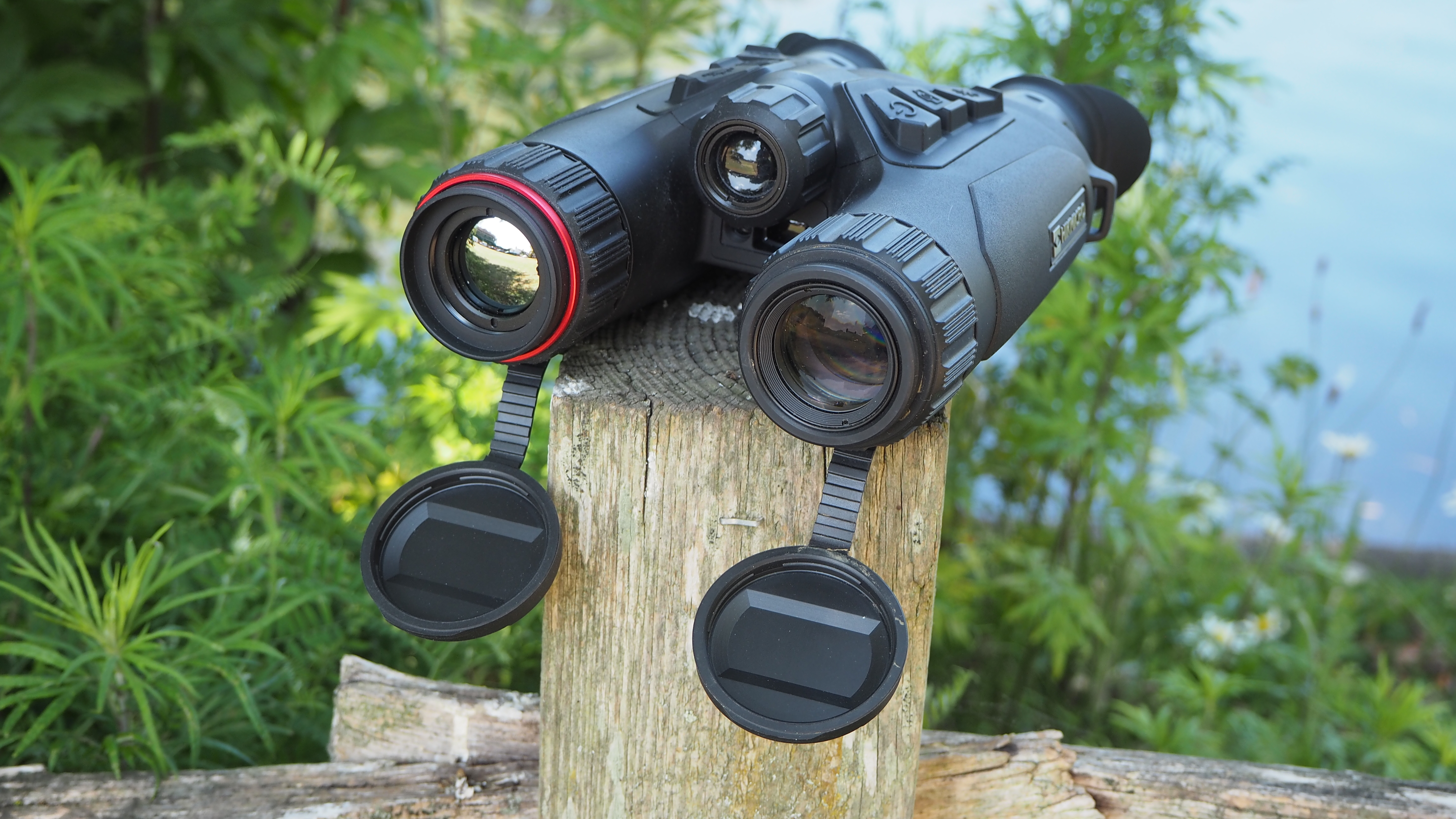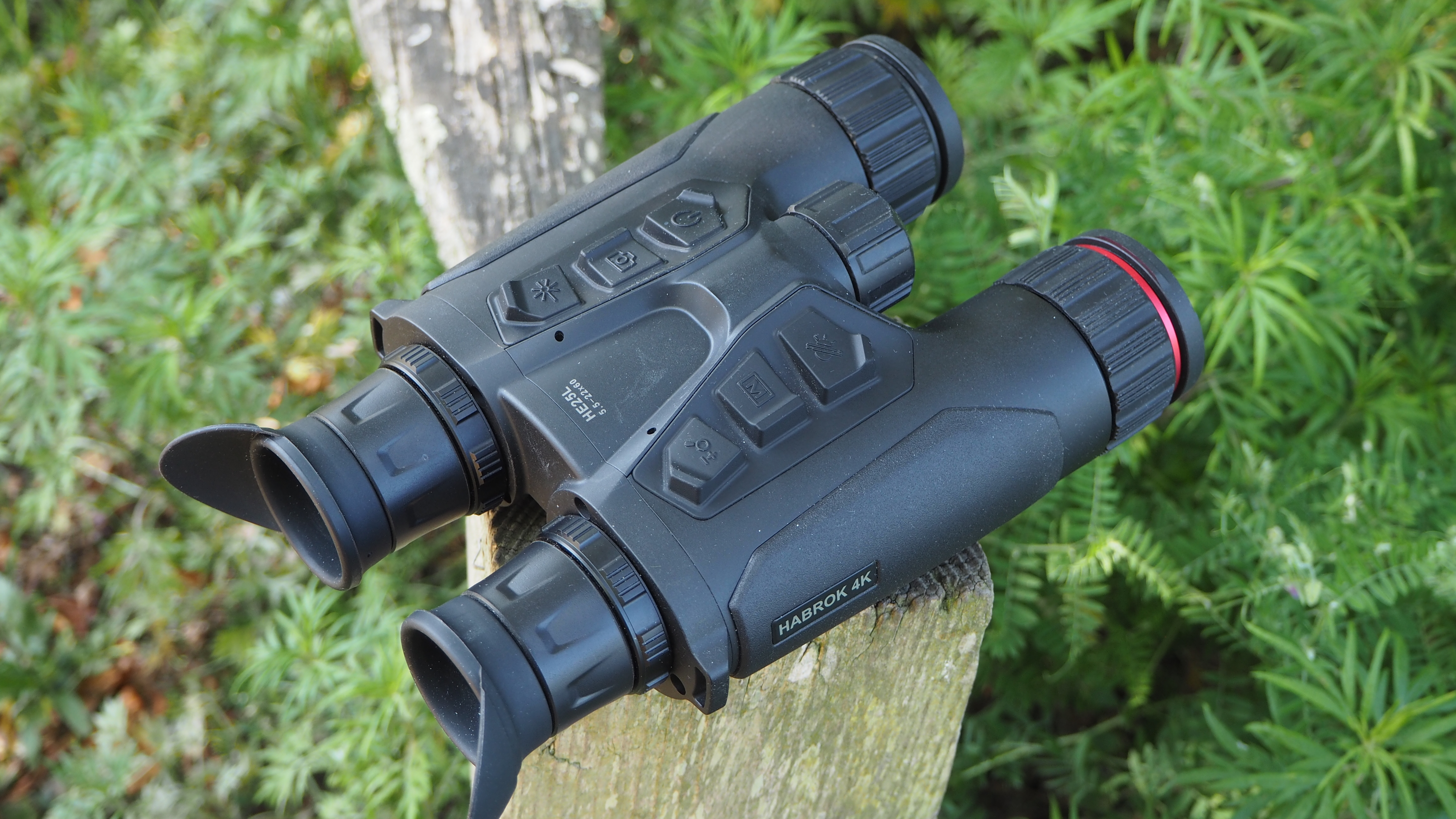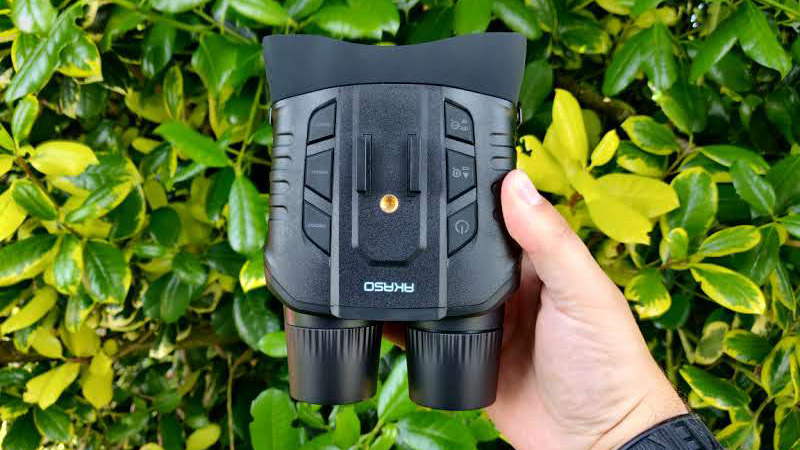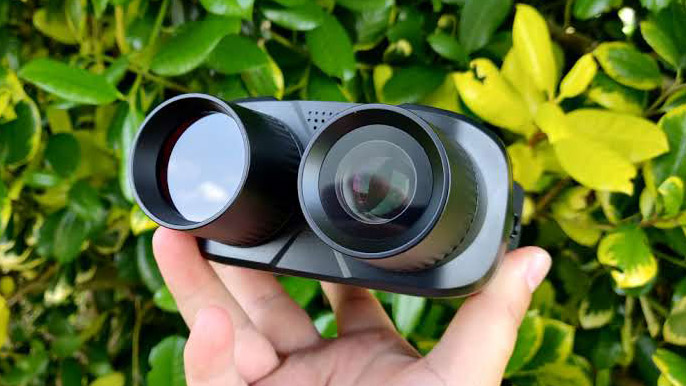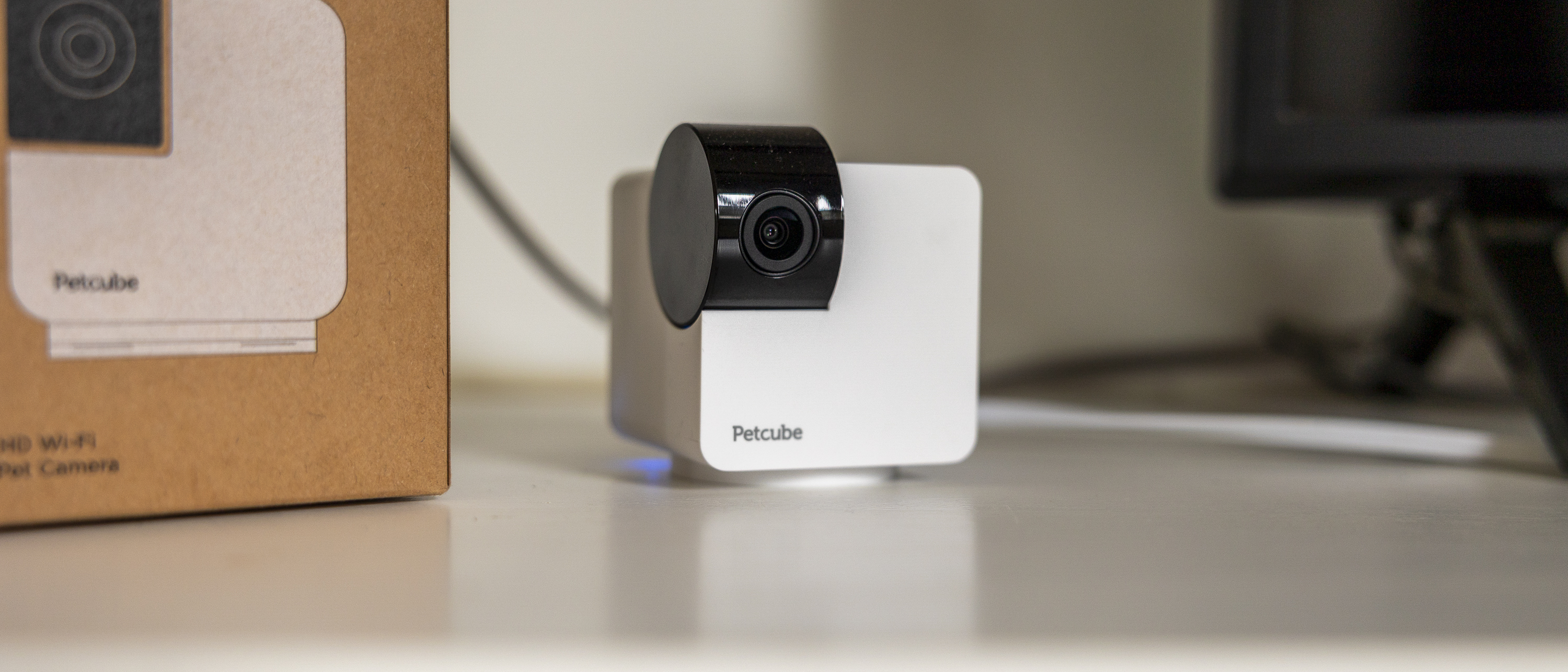The best binoculars In 2025: for astronomy, wildlife, sports fans, and more
Choosing the best binoculars is easy when you know what the specs mean and what to look for
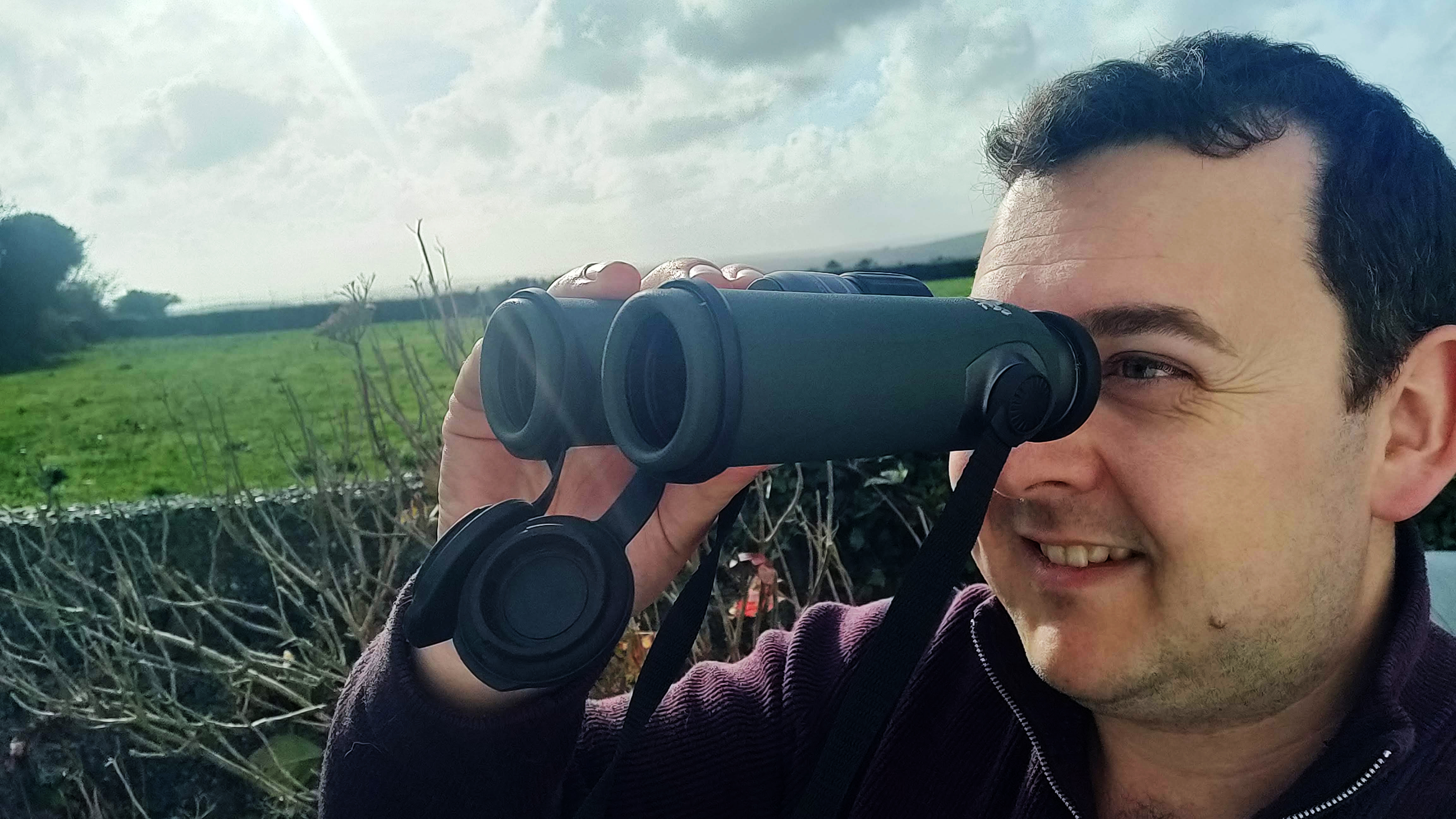
Growing up in the countryside with binoculars never far from reach, I spent countless hours watching wildlife, tracking birds, and soaking up the natural world. If there’s one thing those years taught me, it’s just how invaluable a good pair of binoculars can be - whether you’re after the perfect wildlife view, a relaxing day of birdwatching, a sightseeing trip, or even a spot of stargazing on a clear night.
Experience has shown me that choosing the right binoculars isn’t about chasing brand names or the highest price tag. It comes down to how you’ll use them, what you’re comfortable carrying, and what fits your budget. While premium models certainly exist, you don’t need to break the bank to get a reliable, well-performing pair.
For an all-rounder, the Celestron Nature DX ED 12x50 is a versatile choice that handles most situations with ease. If long-distance stability is key, the Canon 10x42L IS WP - with its excellent built-in image stabilisation - sets a new standard. And for beginners, or those who want quality at a sensible price, the Nikon Prostaff P3 8x42 delivers excellent performance without overcomplicating things.
In this guide, I’ve highlighted binoculars that combine clarity, brightness, and stability, while still offering good value. Whether you’re a seasoned nature enthusiast or just starting out, you’ll find a pair here that’s well-suited to your adventures.
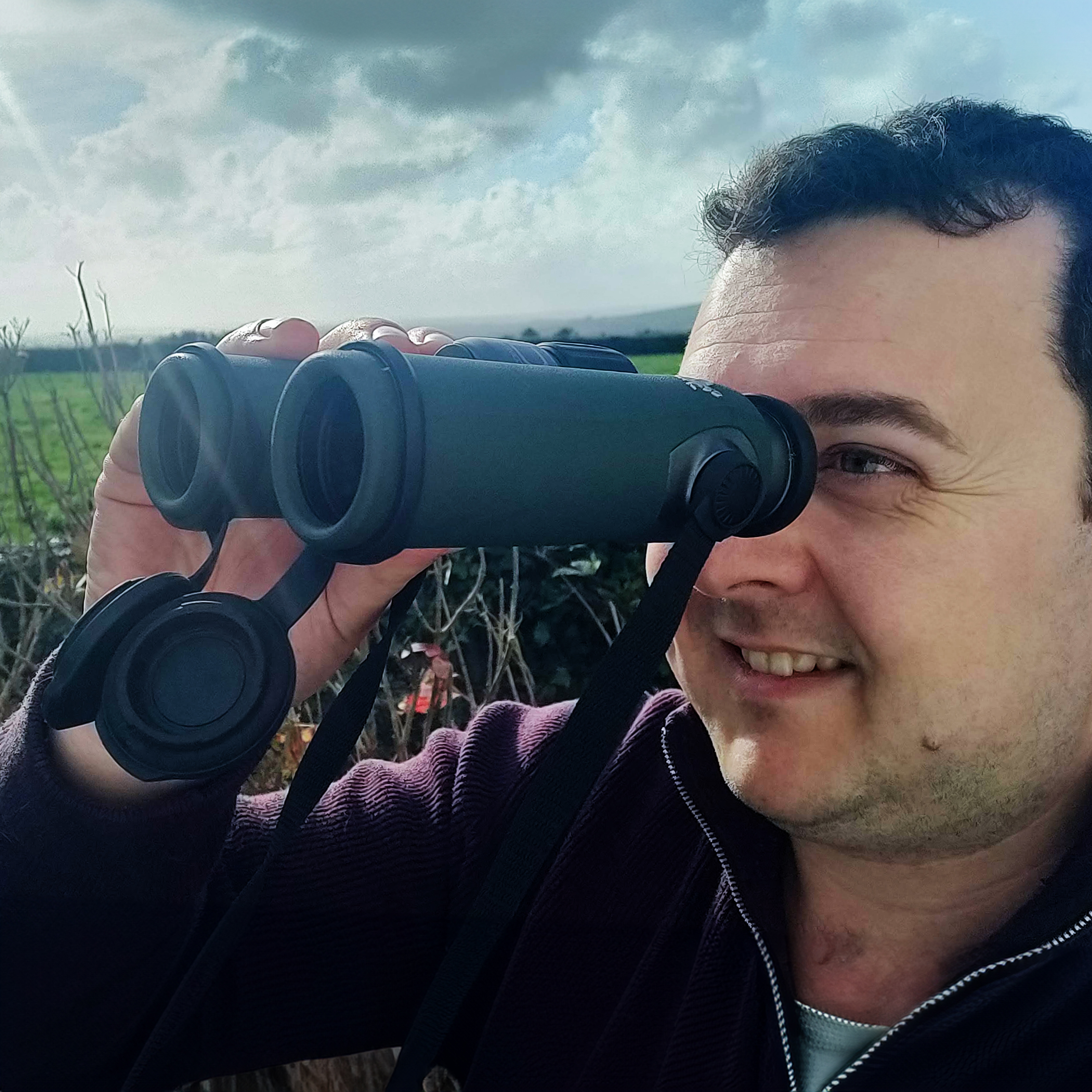
Sebastian has been a Pro photographer for nearly two decades, but he has also been a big country sportsman in his lifetime who can often be found in or around the shooting field, sailing on the open sea, or taking part in other country pursuits – usually with a pair of binoculars in his hand.
The Quick List
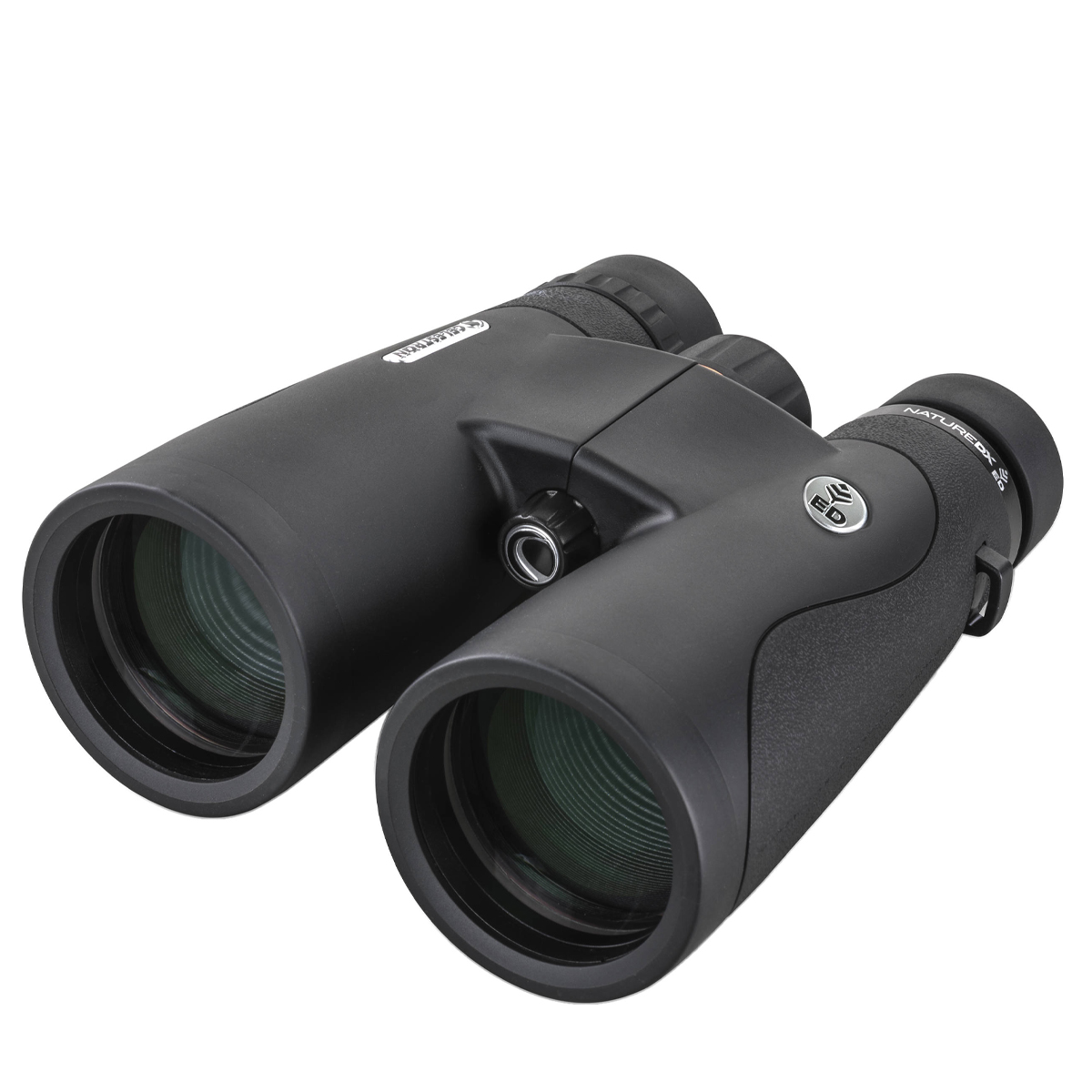
The ability to get a close focus on nearby objects as well as a reasonably wide field of view makes the Celestron Nature DX ED 12x50 binoculars useful for a wide range of outdoor uses.
Read more below
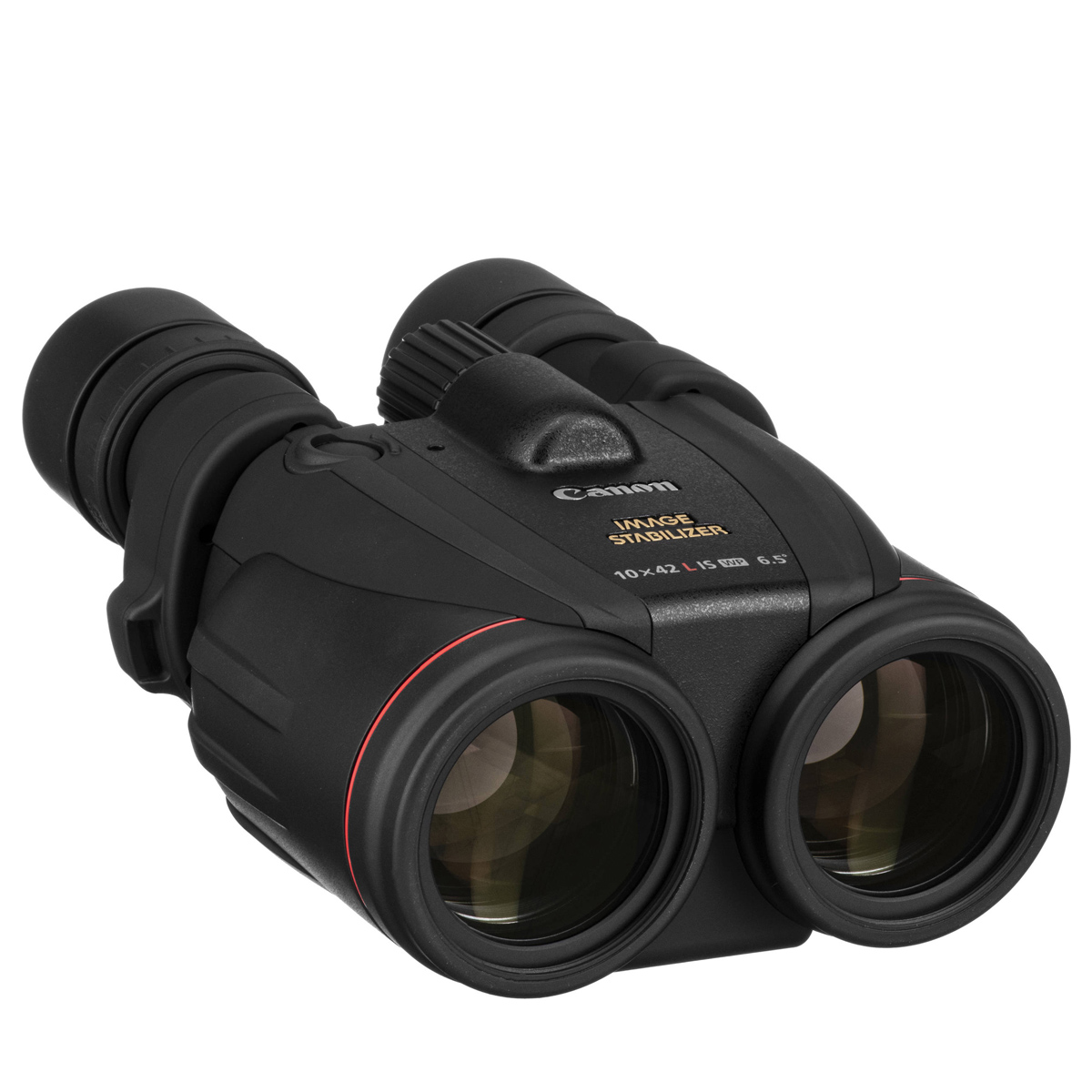
This battery-operated option enables you to get wobble-free images of far-reaching views by just pressing a button on the binoculars – and the stabilizing effect is both instant and jaw-dropping.
Read more below
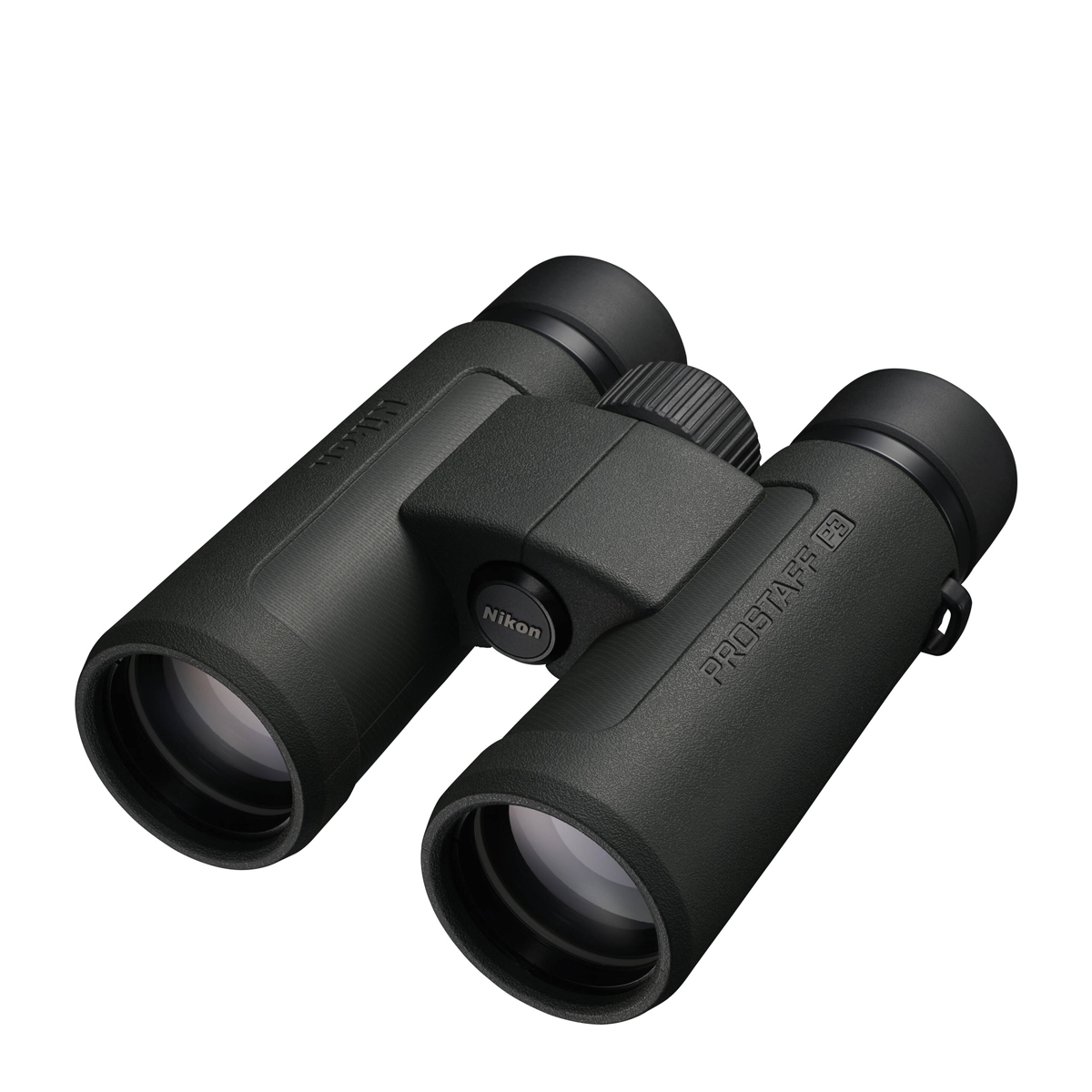
The Prostaff P3 binoculars are a great entry-level product that really impressed me when reviewing. Nikon has saved on manufacturing costs where it counts, but offers a good magnification for beginners.
Read more below
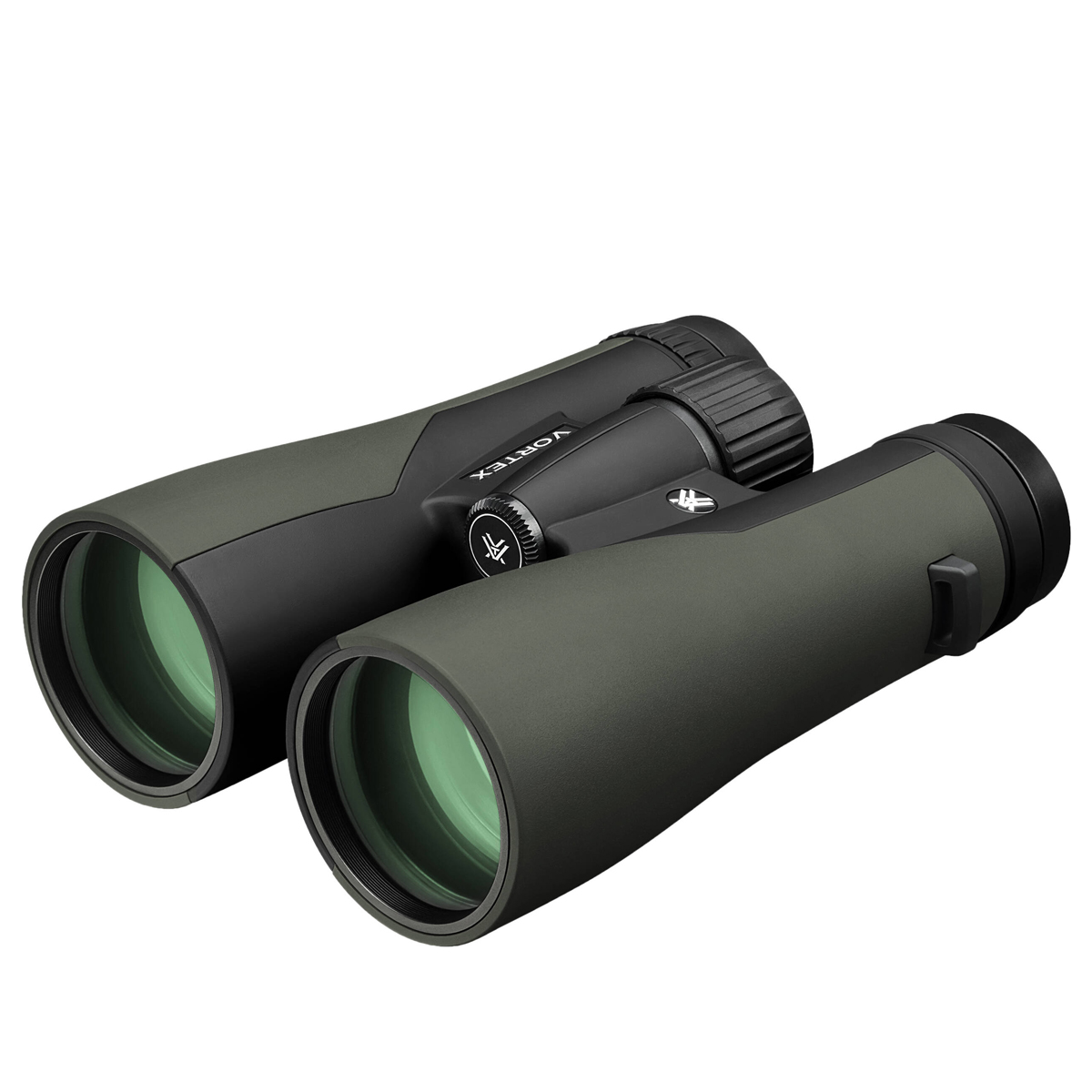
These are a great option if you can't decide between buying binoculars primarily for wildlife or astronomy.
Read more below
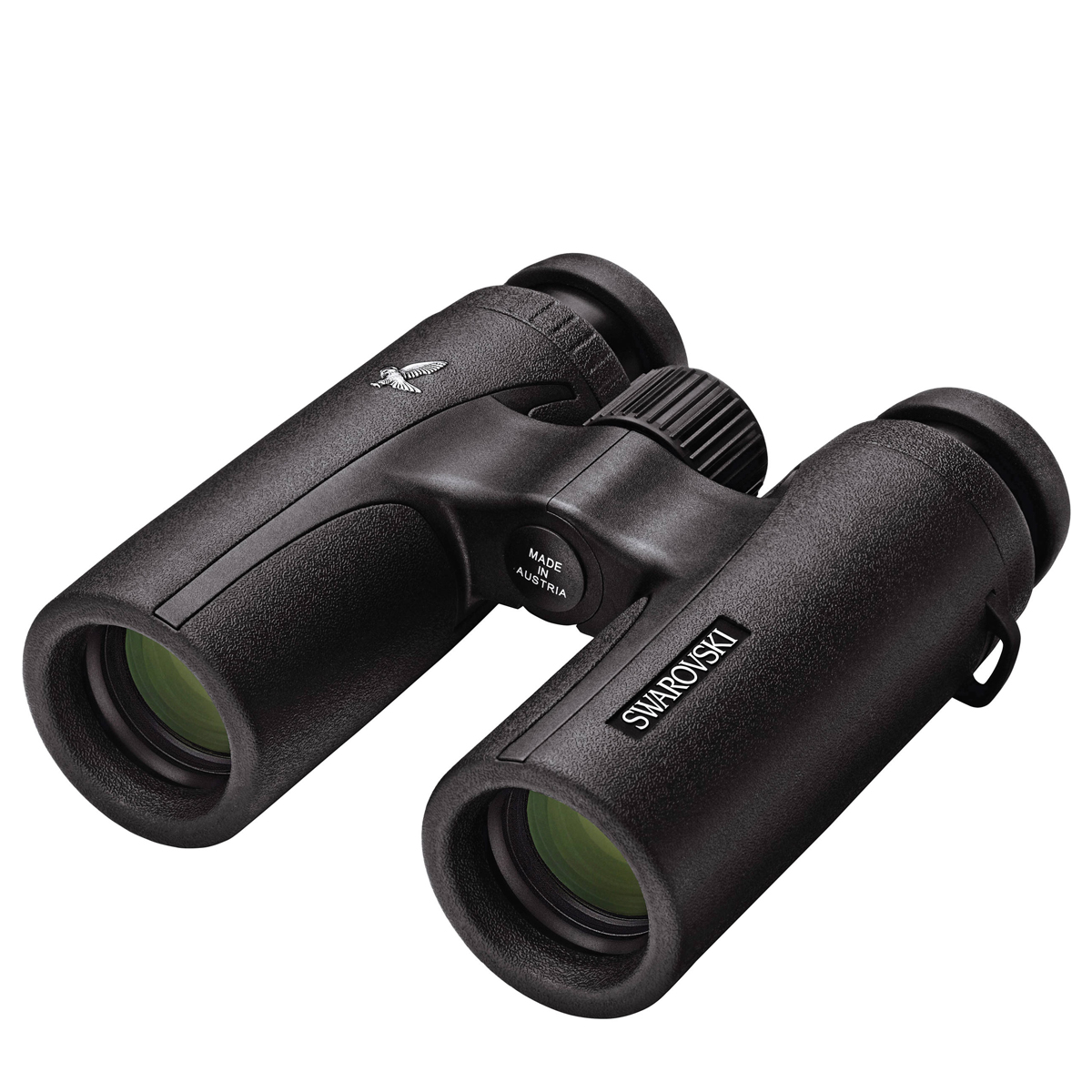
If image and build quality are your number one top priorities, I think these premium compact binoculars are the best you can get.
Read more below
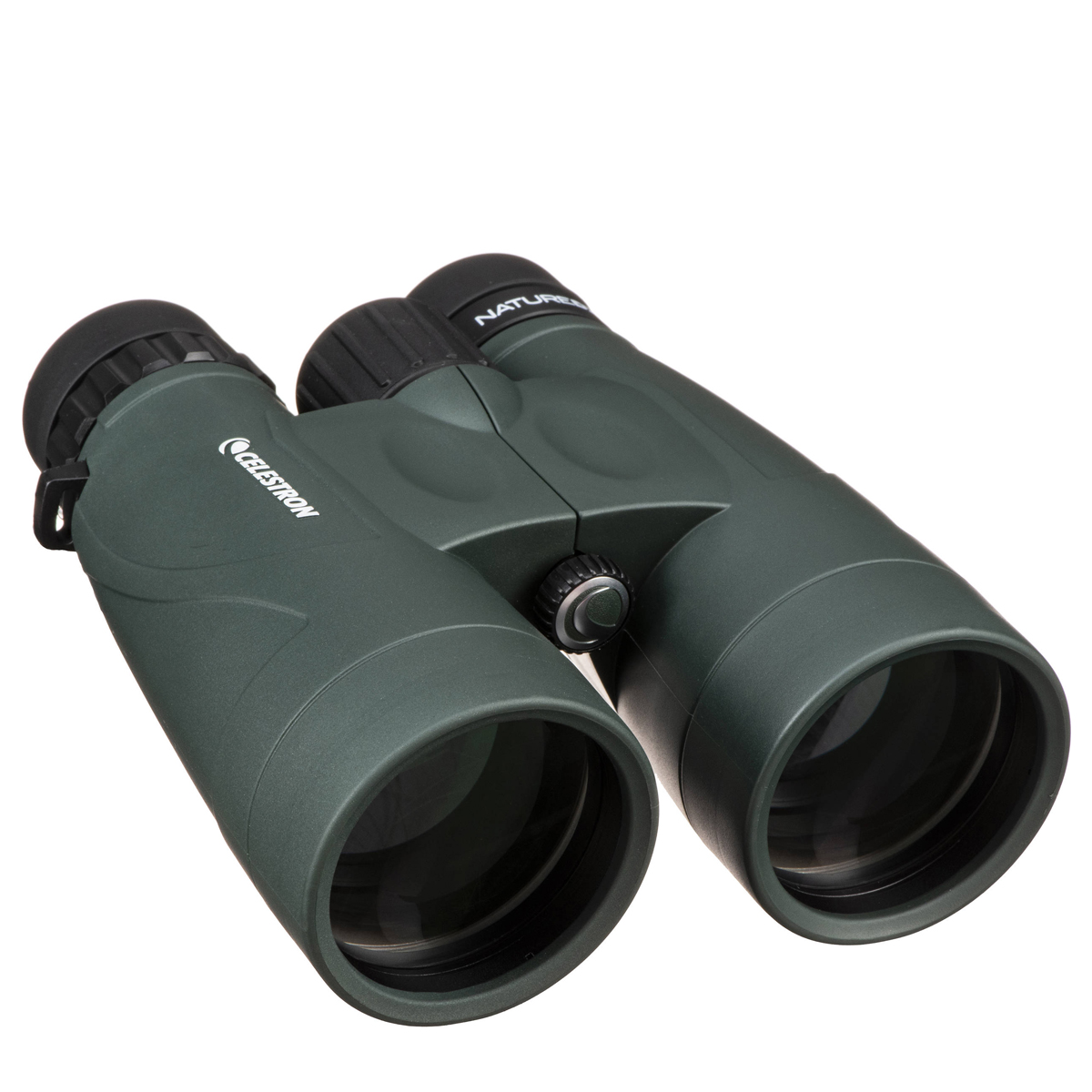
If you want the best bang for your buck I'd pick these: they are a great pair of binoculars to help you out in any situation.
Read more below
View the full list ⤵
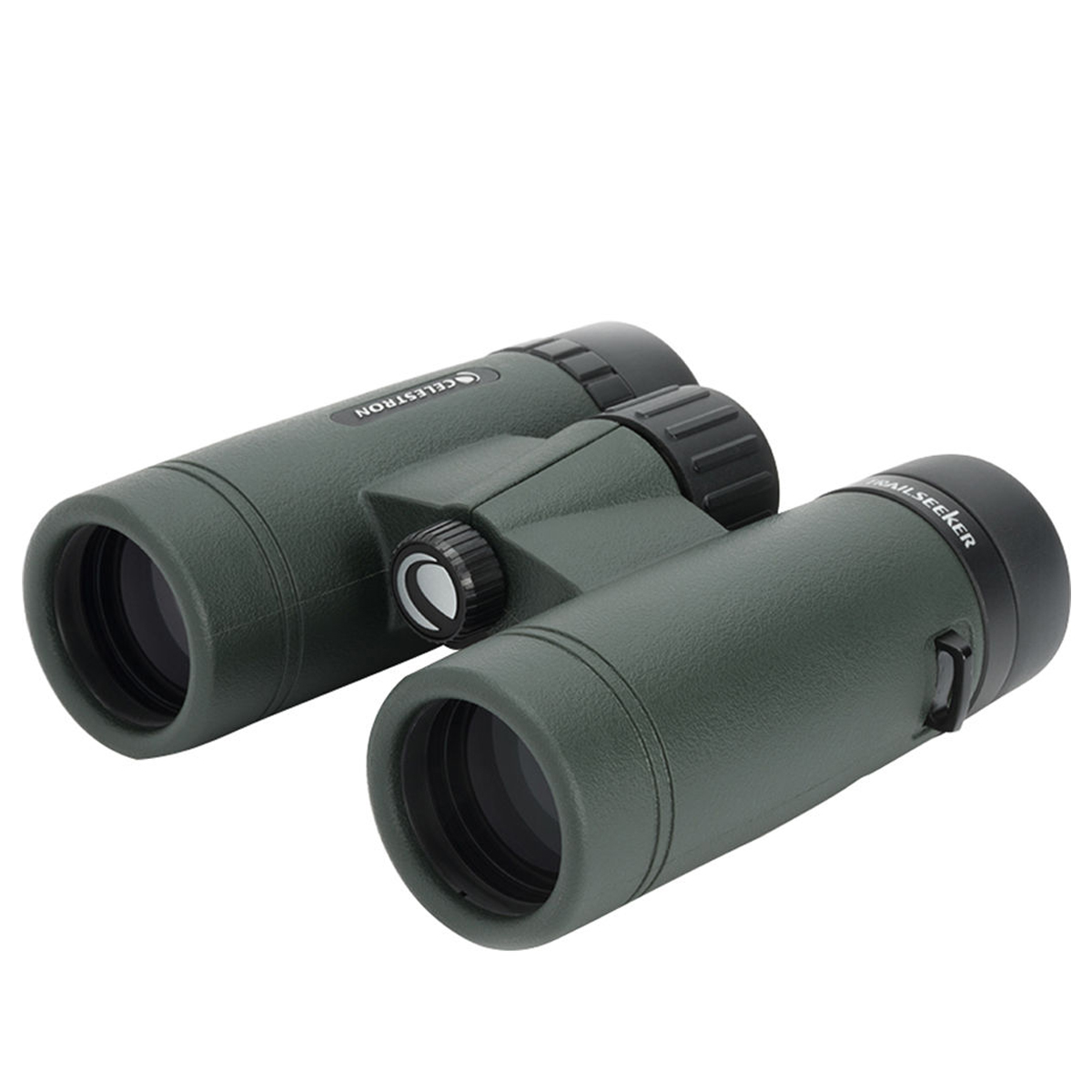
You can spend thousands on a good pair of binoculars for bird-watching - but this pair is a great place to start, offering good views across the board.
Read more below
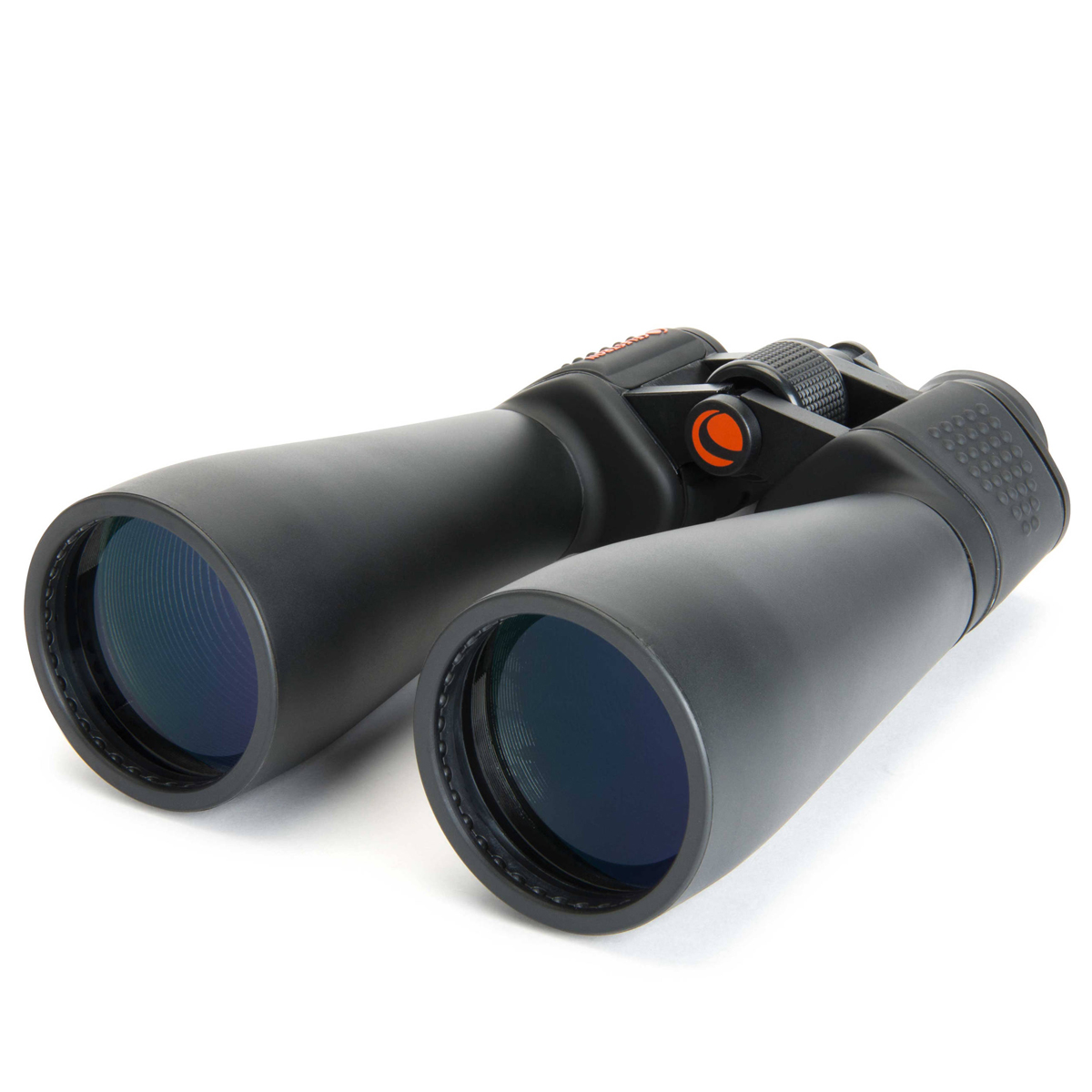
These incredibly well-priced Celestron binos have a huge 15x magnification which can help you to observe galaxies, planets, and lunar details.
Read more below
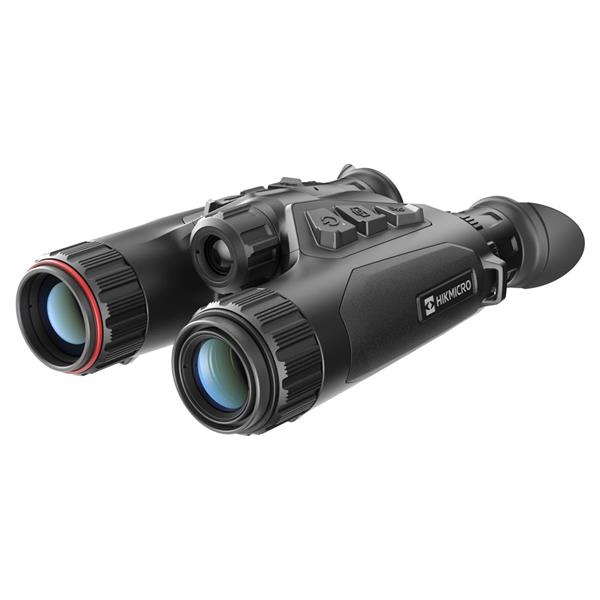
The HikMicro Habrok 4K HE25L is a compact multi-spectrum binocular combining 4K day/night imaging with a thermal overlay for seamless identification and observation in the field.
Read more below
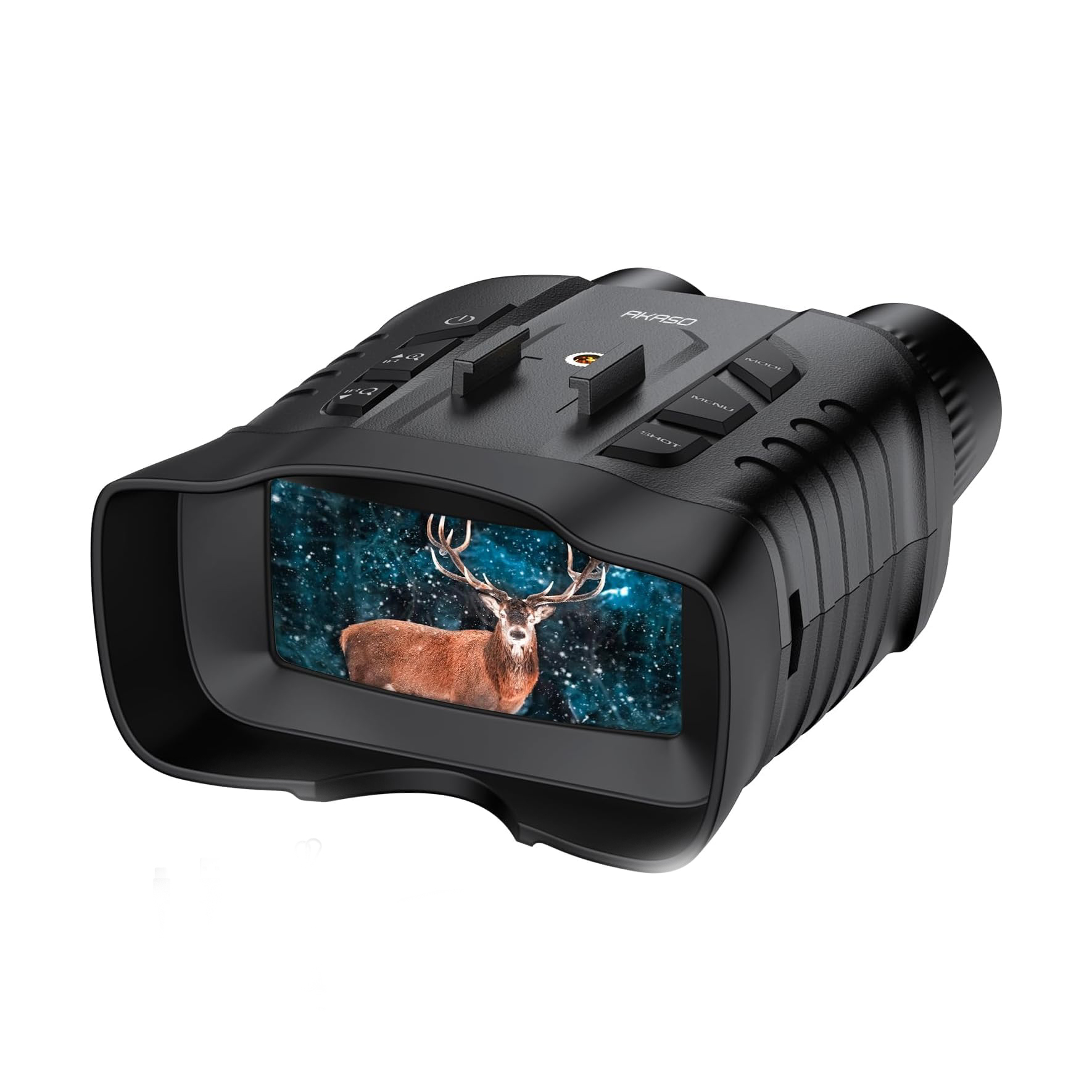
The Akaso Seemoor 200 is a great-value, beginner-friendly, awesome for all-weather night vision binocular with solid IR performance, dual batteries, and USB-C charging, though it lacks onboard storage.
Read more below
The Best binoculars
Why you can trust Digital Camera World
Best binoculars overall
Specifications
Reasons to buy
Reasons to avoid
✅ You want compact: These are a great size to have in your bag at all times
✅ You want great build quality: These are built like a tank, but won't cost you the earth!
❌ You want a premium feel: These binos suffer from a lower-grade rubberized feel
❌ Not the best for long observations: Not much to offer with eye relief and the lens caps can obstruct viewing
The ability to get a close focus on nearby objects as well as a reasonably wide field of view makes the Celestron Nature DX ED 12x50 binoculars useful for a wide range of outdoor uses, as do the tough build quality and the ED (extra-low dispersion) glass.
This high-quality glass gets rid of chromatic aberration, an effect that manifests in some binos as a purplish edge on bright objects in view, especially in low-light conditions like sunrise and sunset. The optics perform very well at night, by the way.
Of course, you’d expect the binos to function well for long-distance viewing, but they can also focus on objects just two meters (6.5 feet) away, making them a real asset for a spot of back-garden birdwatching, for example.
If you're after a mid-range pair of large binoculars ideal for wildlife viewing, I think the Celestron Nature DX ED 12x50 fits the bill perfectly. They aren’t particularly light, but they are a nice compact size for traveling.
Read our full Celestron Nature DX ED 12x50 review for more details
| Row 0 - Cell 0 | Row 0 - Cell 1 | Score |
Optics | Big, bright optics that outperform the price | ★★★★½ |
Features | Travel-friendly with great build quality | ★★★★ |
Value | With their solid construction and great perfroming optics these exceed their price range | ★★★★ |
Final thoughts
The Celestron Nature DX ED 12x50 binoculars offer impressive clarity and reach for the price. With 12x magnification, ED glass, and a rugged, water-resistant build, they’re a strong option for wildlife watchers who want power without breaking the bank.
Best stabilized binoculars
Specifications
Reasons to buy
Reasons to avoid
✅ You want the best: With its Vari-Angle Prism IS system these binos utilizes gyro sensors and micro-processor to give a rock-steady image
✅ You want rugged: Being both waterproof and fog proof these binos are built to tackle any situation
❌ You're on a budget: These cost a fortune, so are out of reach for most of us
❌ You want lightweight: Due to their size and tech inside these are not the lightest around
All of Canon’s current range of binos have the ‘IS’ suffix in their model name to denote the fact they’re image-stabilized binoculars. This battery-operated option enables you to get a wobble-free image by just pressing a button on the binoculars – and the stabilizing effect is instant and jaw-dropping when you see it in person. Crucially, you just use the image stabilization when you need it - and you can still use the binoculars even if the battery runs flat.
From the broad range of Canon IS options available, I picked the rubber-coated Canon 10x42L IS WP model as the best. As the WP in the name suggests, they’re also waterproof, so ideal for an even broader range of long-distance pursuits. Plus, Canon’s ‘L’ series is its premium lineup, providing a super steady view in the most adverse of conditions.
As well as rock-solid stability, these porro prism binoculars sat very comfortably in my hand and sport a comfortably long (at 16mm) eye relief..
Read our full Canon 10x42L IS WP binoculars review for more details
| Row 0 - Cell 0 | Row 0 - Cell 1 | Score |
Optics | For image stablized binos, there are the best in the business with crystal clear optics | ★★★★★ |
Features | Image stabilization is the party pice with these binos, turning shaky observations into smooth, still viewing | ★★★★½ |
Value | Their cost is very high for most users, but you do get what you pay for | ★★★★ |
Final thoughts
The Canon 10x42L IS WP binoculars deliver outstanding image quality with the added benefit of image stabilization, making handheld viewing steady and sharp. Their premium optics and waterproof build suit serious wildlife and bird watchers who demand clarity and performance in all conditions.
Best-value binoculars
Specifications
Reasons to buy
Reasons to avoid
✅ You're on a budget: These binos offer amazing value for money
✅ You want lightweight: At just 465g these are perfect to carry with you all day
❌ You want quality: While the binos are good, the accessories feel very cheap
❌ You want solid weatherproofing: The rubberized shell feels spongy and could lead to inconsistent weather-sealing
The Prostaff P3 binoculars are an excellent entry-level choice and a great value for anyone looking to get into optics or upgrade on a budget. When I reviewed them, I was impressed by how Nikon focused on delivering top-notch optics while saving costs on less essential accessories. The result is a lightweight, durable pair of binoculars that offers the high-quality performance Nikon is known for, all at a very approachable price.
With multicoated lenses, these binoculars provide crisp, bright images, even in challenging lighting conditions. Whether you’re birdwatching at dawn, spotting wildlife, or enjoying an airshow, the Prostaff P3 handles it all with ease. They’re comfortable to use for extended periods and versatile enough to perform well across a variety of activities.
If you choose these, I’m confident you’ll be pleased with the results, even at full price. Over time, you might want to upgrade the neck strap and lens covers for better comfort and durability, but out of the box, they’re still an excellent pick. For anyone wanting reliable performance in a wide range of settings, the Prostaff P3 is a fantastic option.
Read our full Nikon Prostaff P3 8x42 binocular review for more details
| Row 0 - Cell 0 | Row 0 - Cell 1 | Score |
Optics | With great performing optics, Nikon has left what's really matters, while getting rid of other things you don't need | ★★★★ |
Features | Extremely lightweight and compact make them perfect for observing wildlife cheaply | ★★★★ |
Value | Priced competitively these binos are the perfect solution for anyone on a budget | ★★★★½ |
Final thoughts
The Nikon Prostaff P3 8x42 binoculars are a lightweight, affordable option ideal for casual birding and nature walks. They offer a bright, wide field of view with reliable sharpness and weather resistance, making them a dependable all-rounder for everyday use.
Best all-round binoculars
Specifications
Reasons to buy
Reasons to avoid
✅ You love hiking: With an included harness, your neck will thank you
✅ You want to view in low light: These binos offer great light gathering to view wildlife even on dim days
❌ You hate tethered lens caps: Unfortunately, the lens caps are attached and can get in your way when viewing the subject
❌ You like to travel light: The harness can get confusing and also has to be worn over the top of your clothing
If you can't decide between buying binoculars primarily for wildlife or astronomy then you only have one decision to make. Perfect for both day and night activities, 10x42 or 10x50 binoculars are the best options for most people, though the Vortex Crossfire HD 10x50s are a definite step-up product that has the big benefit: it comes with a bespoke chest harness for extra comfort and quick deployment. It’s not often you’ll get this included with a set of binoculars, but in practice they’re pretty effective as easing the load during long viewing sessions.
They also produce good results. We took them to a football and were delighted with the relatively wide field of view, as well as an image that held sharp nearly from edge to edge. They also demonstrated good low-light sharpness and contrast when we did some star-watching.
With the excellent build quality and superb optics, I think the Vortex Crossfire HD 10x50 should be candidate binoculars for anyone looking for a step-up option to use for many years in all kinds of scenarios, from wildlife to sport to astronomy.
Read our full Vortex Crossfire HD 10x50 review for more details
| Row 0 - Cell 0 | Row 0 - Cell 1 | Score |
Optics | For the price the optics offer great viewing in either daytime or night observations | ★★★★ |
Features | Offering a good magnification, solid construction, these are a great step-up option from budget offerings | ★★★★½ |
Value | For thier price they offer a good price-to-performance ratio that most user will like | ★★★★½ |
Final thoughts
The Vortex Crossfire HD 10x50 binoculars offer strong magnification and low-light performance at a great price. With solid build quality, HD optics, and a wide field of view, they’re a practical choice for hunters and nature enthusiasts who need power and durability.
Best binoculars for optical quality
Specifications
Reasons to buy
Reasons to avoid
✅ You want the best: If you want the best optical quality around - nothing beats these!
✅ You want crystal clear viewing: The performance is second to none, and your view will be crystal clear to enjoy many observations with real sharpness and clarity
❌You're on a budget: These are the best around, but you have to pay a hefty price for perfection
❌ Accessories: Unfortunately, the storage bag and strap don't match the quality of the binos overall
If price isn't a concern and you just want the best optical quality on the market to date, then this pair of Swarovski CL Companion 10x30 compact binoculars are just the thing to let you observe wildlife from as close to 3 meters all the way up to 132 meters – with crystal clear vision - I thought they were fantastic!
If you're looking for the best optical quality binoculars that are also lightweight for carrying long distances, and that let you see your observations from a far distance, these are possibly the best compact binoculars you can buy, and I've tested a few!
With the lightweight construction of the CL Companion binoculars and the impeccable build quality, you can be sure your investment will withstand the test of time, which is what you would hope as these are far from cheap. But I say you get what you pay for and the optical quality of these binoculars is possibly the best on the market.
Read our full Swarovski CL Companion 10x30 review for more details
| Row 0 - Cell 0 | Row 0 - Cell 1 | Score |
Optics | These are the best in the business, clarity is crystal clear, giving your observations that 3D pop | ★★★★★ |
Features | Solid construction, expectional optics, and the best materials used make these the best pair of binos out there | ★★★★★ |
Value | These do come with a heavy cost, but when you want the best, you have to pay for it | ★★★★★ |
Final thoughts
The Vortex Crossfire HD 10x50 binoculars offer strong magnification and low-light performance at a great price. With solid build quality, HD optics, and a wide field of view, they’re a practical choice for hunters and nature enthusiasts who need power and durability.
Best high-magnification binoculars
Specifications
Reasons to buy
Reasons to avoid
✅ You wear glasses: With great eye relief your eyes won't get fatigued
✅ You want the best bank for your buck: At under $200/£200 these offer a great price to performance ratio
❌You care about color fringing: While viewing in various daylight conditions color fringing was distracting
❌You want good clarity lenses: Corners were notably soft around the edges
A sweet spot for binoculars, the Celestron Nature DX 12x56 pack a heck of a lot of optics into a tidy, affordable package. A close minimum focusing distance and the generous 12x magnification range make them ideal beginner wildlife binoculars and their 56mm objective lenses even offer some nighttime views (especially of the moon) an attractive opportunity.
For birdwatching, we enjoyed the extra detail in the feathers that the 12x magnification gave us, and were also pleased that the binos could focus in at less than three meters – great for observing feed stations in the garden, for instance.
Are they the sharpest you can get? No. Do they have no color fringing? No. But are they one of the best binoculars you can buy for the price? Wholeheartedly, yes I think so. Just big enough to zoom in on far-away subjects without becoming cumbersome, the DX 12x56 is the model of the line-up to get.
Read our full Celestron Nature DX 12x56 review for more details
| Row 0 - Cell 0 | Row 0 - Cell 1 | Score |
Optics | Unforitnaly, we did notice some color frining which can be distraticin when making observations in the daylight. Corners were also noticeably soft | ★★★½ |
Features | Offering great eve relief will benefit those who wear glasses. Due to thier size they will fit in anyone's hand. High magnification means greater observations across vast distances. | ★★★★ |
Value | For what you get, they are evenly priced in the market, but other do a better job for cheaper | ★★★★★ |
Final thoughts
The Celestron Nature DX 12x56 binoculars provide powerful magnification and bright optics, making them well-suited for birding and stargazing. Their durable, waterproof design and comfortable eye relief enhance usability in various conditions.
Best binoculars for bird-watching
Specifications
Reasons to buy
Reasons to avoid
✅You want a lot of accessories: With an included stuff sack and a full harness this is a ready-to-go kit for any adventure
✅ You want great waterproofing: If you like going out in all weathers, these binos have amazing waterproofing to repel the rain
❌ You like precision: The loose lens caps can put you off the build quality
❌ You want lightweight: They are a bit on the heavy side of things at 655g
Binoculars can be an excellent alternative to traditional telescopes for exploring the night sky, provided they offer sufficient magnification, and the Celestron SkyMaster 15x70 binoculars deliver just that.
With an impressive 15x magnification, these binoculars make it possible to observe celestial wonders like galaxies, planets, and intricate lunar details that might otherwise be out of reach. They also feature a generous amount of eye relief, making them comfortable for spectacle-wearers, which is a thoughtful addition for prolonged stargazing sessions.
During testing, the timing was perfect to enjoy the summer constellations, and these binoculars provided stunning views of Cygnus, the Swan, and its surrounding stars. We also managed to observe the M81 and M82 galaxies, a feat that lower-magnification binoculars simply couldn’t achieve. The clarity and detail made stargazing an absolute pleasure, although their magnification power means that some basic knowledge of the night sky is helpful to navigate effectively with these optics.
While it’s possible to handhold the SkyMaster 15x70 binoculars for short periods, their size and magnification make them much more enjoyable when used with a tripod. Fortunately, Celestron includes a binocular tripod adapter, which makes attaching them to a tripod quick and easy. This small addition significantly enhances stability, allowing you to fully appreciate the detail and brightness they offer without any handshake interfering with your view.
Thanks to their affordable price and powerful capabilities, the Celestron SkyMaster 15x70 binoculars are a fantastic entry point into the world of stargazing. Whether you’re scanning constellations, exploring deep-sky objects, or marveling at the craters of the moon, these binoculars bring celestial sights within reach, offering a rewarding experience for novice and seasoned stargazers alike.
Read our full Celestron TrailSeeker 8x42 binocular review for more details
| Row 0 - Cell 0 | Row 0 - Cell 1 | Score |
Optics | Optics are clear with great visibility, even when focusing on the samllest of subject, perfect for bird watching | ★★★★ |
Features | Excellent waterproofing, wide field of view and solid construction make these perfect for all weather conditions | ★★★★ |
Value | For the price, they are quite possibly the best choice for keen bird watchers | ★★★★★ |
Final thoughts
The Celestron Trailseeker 8x42 binoculars deliver sharp, bright views with a wide field of vision, ideal for birdwatching and general outdoor use. With a magnesium alloy body, ED glass, and smooth focusing, they offer great performance and comfort at a mid-range price.
Best binoculars for astronomy
Specifications
Reasons to buy
Reasons to avoid
✅ You don't mind heavy: These are very weighty at 1.36kg, but are rock-solid
✅ You love star gazing: With a huge 15x magnification these are perfect for looking up at the stars
❌ You want to handhold: These are best mounted on a tripod to have your neck and keep them steady at all times
❌ You want compact: These are very large binos, so you won't be putting them in your pocket anytime soon
Binoculars are a great alternative to a traditional telescope for observing the night sky, as long as they have enough magnification. These incredibly well-priced Celestron binos have a huge 15x magnification which can help you to observe galaxies, planets, and lunar details. They also offer a good amount of eye relief for spectacle-wearers.
We had the summer constellations available to view at the time of testing, and enjoyed some lovely views of Cygnus, the Swan, as well the surrounding stars, and were able to check out the M81 and M82 galaxies, which wouldn’t be possible with lower-magnification binos. In fact, they get so close that it’s helpful to have some knowledge of the night sky already, so you can find your way around with these optics.
In my tests, you can just about handhold them, but they are much better used with a tripod - and very conveniently they provide you with a binocular tripod adaptor that simplifies attaching them to a three-legged support.
Read our full Celestron Skymaster 15x70 review for more details
| Row 0 - Cell 0 | Row 0 - Cell 1 | Score |
Optics | With outstanding optical performance these are the perfect binos for stargazing | ★★★★½ |
Features | High 15x magnification, solid build, make these a weighty option, but the features out-weight the heft | ★★★★ |
Value | For their price the outperfrom anything within the price range, and category | ★★★★★ |
Final thoughts
The Celestron SkyMaster 15x70 binoculars are a great budget pick for stargazing, offering powerful magnification and bright views. They work best with a tripod due to their size, but deliver impressive night sky performance for the price.
best multi-spectrum
Specifications
Reasons to buy
Reasons to avoid
✅You want one device that combines 4K day/low-light imaging with a thermal overlay, so you can detect and identify in a single, uninterrupted view.
✅You want controls and ergonomics that feel natural in the field—manageable weight for its category (≈795g), a clear OLED viewfinder, separate focus adjustment, and straightforward navigation for real-time use.
❌You want to keep in mind that effective identification - especially from the thermal channel - falls off after a few hundred meters in real-world conditions, and humidity can further blunt performance.
❌You want to be prepared for a slight delay or smoothness hit when switching or blending between thermal and optical views, which can disrupt rapid target acquisition.
The HikMicro Habrok 4K HE25L earns its place by turning familiarity into capability. The dual-use controls and menu navigation in low light demand a short adjustment period, but once you’ve learned the layout it becomes a versatile day/night observation platform.
The pairing of a 4K optical channel with a thermal overlay means you can spot heat signatures and immediately see them in context, without juggling separate tools. Built-in range estimation and the ability to capture or record what you’re seeing broaden its practical applications for wildlife monitoring, search tasks, and security work.
Endurance and usability reinforce that core value. Replaceable 18650 cells and power-saving modes keep you operating longer in the field, reducing downtime. The ergonomics - separate focus controls, a clear eyepiece readout, and a hefty but balanced chassis - are aimed at real-world sustained use, though the weight does make extended handheld steadiness something to manage. The integrated rangefinder brings actionable distance data into the mix, tightening the link between thermal detection and optical confirmation.
There are inherent trade-offs in consolidating multiple spectral capabilities into one unit. The thermal channel (256×192) is optimized for detection rather than fine detail, so thermal imagery is naturally softer than the optical feed, and pushing digital zoom can introduce instability unless the device is stabilized.
Toggling overlays or adjusting settings by feel in darkness can lead to occasional missteps until muscle memory forms, and blending modes carry a touch of latency. These limitations don’t undermine the tool - they’re the expected costs of combining functionality in a single system.
Ultimately, the Habrok 4K HE25L delivers an effective, around-the-clock observation solution without forcing you to piece together separate thermal and night-vision components. For anyone who needs detection, context, and documentation across daylight, low light, and thermal domains, its integrated feature set and price make it a compelling, pragmatic alternative to more fragmented setups.
Read more: HikMicro Habrok 4K HE25L review
| Row 0 - Cell 0 | Row 0 - Cell 1 | Score |
Optics | The Habrok 4K HE25L’s 4K optical channel delivers sharp daylight and low-light detail, helping confirm and contextualize thermal detections. | ★★★★★ |
Features | The Habrok 4K HE25L combines thermal overlay, built-in rangefinder, recording, and replaceable batteries into one rugged, around-the-clock observation tool. | ★★★★ |
Value | Given its combined thermal, optical, rangefinding, and recording capabilities in one unit, the Habrok 4K HE25L delivers strong value versus assembling separate systems. | ★★★★★ |
Final thoughts
The HikMicro Habrok 4K HE25L, as an all-in-one day/night tool, simplifies your kit while keeping capability high - if you need reliable around-the-clock observation, it’s worth a close look. Its blend of thermal detection, sharp optical confirmation, range estimation, and recording means you can cover more ground with less gear, so start with it as the core of a lean, effective field setup.
Best budget night vision
Specifications
Reasons to buy
Reasons to avoid
✅ Easy file transfer: Transfer files using either a Micro-USB cable or a microSD card reader.
✅ Solid construction: Sturdy build quality provides durability and a sense of reliability.
❌ Clunky file transfer: While transferring files is simple, the process may feel somewhat clunky.
❌ Weight consideration: Size and weight could be a drawback for users who prefer lightweight options.
The Akaso Seemoor 200 quietly redefines what you can expect from a sub-£/$200 digital night vision binocular. It delivers a rugged, user-friendly package that works in daylight and after dark, giving beginners and casual observers a reliable entry point without pretense.
Yes, it doesn’t have the color fidelity of premium optics, and you’ll need to supply your own MicroSD card for recordings, but those are small trade-offs in a product that otherwise checks the practical boxes where it counts.
What elevates the Seemoor 200 is how much thoughtful utility Akaso managed to pack into its price. USB-C charging is a standout inclusion here, speeding replenishment and aligning with modern power habits, and the two rechargeable batteries in the box mean you can rotate power without hunting for extras in the field. The chassis feels light yet solid, comfortable to hold for prolonged spotting sessions - whether you’re scanning for wildlife, camping, or just experimenting after sunset.
In use, the infrared night mode is better than you’d expect at this level, rendering usable detail in low light, while the day/night switching between color and IR is smooth and intuitive.
Video capture isn’t cinematic, but it records shareable clips with minimal fuss, and the interface stays uncluttered - exactly what someone new to digital night vision wants: capability without complication.
Bottom line: the Akaso Seemoor 200 isn’t pretending to be a professional tactical system. It knows its audience - outdoor hobbyists, weekend explorers, and curious newcomers - and gives them dependable, well-considered night vision for a price that doesn’t demand justification. If you’re looking for a low-cost, practical way to see after dark, it’s a smart place to start.
Read more: Akaso Seemor 200 review
| Row 0 - Cell 0 | Row 0 - Cell 1 | Score |
Optics | The Akaso Seemoor 200’s optics combine daytime color imaging with infrared night vision, delivering usable detail in low light even if it doesn’t match higher-end glass. | ★★★★ |
Features | The Akaso Seemoor 200 packs practical features like USB-C charging, dual-day/night modes, video recording, and two included rechargeable batteries into an entry-level night vision binocular. | ★★★★ |
Value | For the price, the Akaso Seemoor 200 delivers exceptional value, giving newcomers reliable night vision and thoughtful conveniences without breaking the bank. | ★★★★★ |
Final thoughts
The Akaso Seemoor 200 is a clear-eyed entry point into digital night vision - affordable, practical, and surprisingly capable for its class. If you’ve been curious about extending your observation into the dark without overcomplicating your kit or overspending, give the Seemoor 200 a serious look; it arms you with enough performance and thoughtful touches to start exploring after sunset with confidence.
How to choose the best binoculars
What do the numbers, such as 8x42 and 12x50, mean on binoculars?
Binoculars come in all shapes and sizes, but the two specs that matter most are magnification and lens diameter. You’ll usually see them listed in the model name, like 10x20 or 6x30. The first number is magnification - how much closer the subject appears - while the second is the diameter of the objective lenses in millimetres.
It’s tempting to think higher magnification is always better, but it comes with trade-offs. The more you zoom in, the narrower your field of view becomes, making it harder to track moving subjects. High magnification also exaggerates hand shake, so you may need a tripod or image stabilisation to keep things steady.
Lens size affects how much light your binoculars can gather. Bigger lenses mean brighter, clearer views in low light, but they also add weight, bulk, and cost. The trick is to strike a balance that suits your style of use.
A useful way to judge low-light performance is to look at the exit pupil, which you get by dividing the lens diameter by the magnification. For example, 10x20 binoculars give a 2mm exit pupil, while 6x30 models offer 5mm. As a rule, if you plan to use binoculars at dusk, dawn, or on overcast days, aim for an exit pupil of at least 5mm for the best visibility.
What are the best binoculars?
If budget isn’t an issue and only the very best optics will do, the Swarovski CL Companion 8x30 binoculars are hard to beat. They deliver razor-sharp clarity, letting you enjoy wildlife up close from just 3 metres away or follow subjects at distances of over 130 metres with remarkable detail.
Do you want me to make this more luxurious in tone - leaning into that premium, aspirational feel - or keep it straightforward and practical for a buying guide?
Best binoculars for beginners?
The Nikon Prostaff P3 binoculars may be entry-level, but they left a strong impression in testing. Nikon has kept costs down in sensible places - mainly with the included accessories - while ensuring the optics deliver the quality and performance you’d expect from the brand.
How we test binoculars
The best binoculars are thoroughly field-tested for image quality, portability, durability, and how well they perform across different activities, from stargazing and sports to wildlife and marine use.
We put optical performance to the test in all kinds of weather. Bright days reveal clarity, sharpness, and any colour fringing, while overcast skies show us how well the lenses handle brightness and eye relief.
To check reliability, each pair is also tested for build quality and weather resistance in tough conditions - so you can trust that these recommendations are based on real-world use.
Today's prices compared
The best camera deals, reviews, product advice, and unmissable photography news, direct to your inbox!
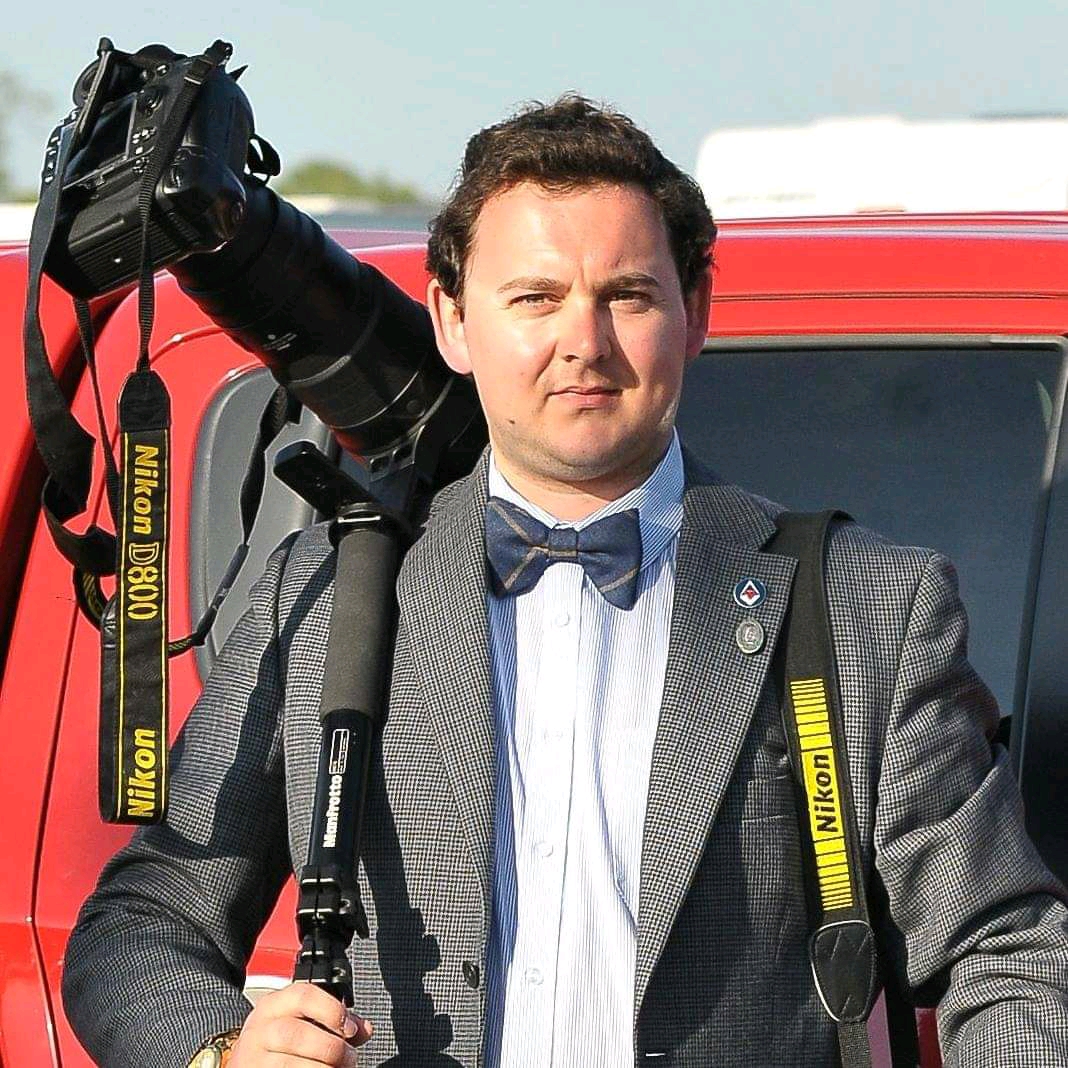
For nearly two decades Sebastian's work has been published internationally. Originally specializing in Equestrianism, his visuals have been used by the leading names in the equestrian industry such as The Fédération Equestre Internationale (FEI), The Jockey Club, Horse & Hound, and many more for various advertising campaigns, books, and pre/post-event highlights.
He is a Fellow of the Royal Society of Arts, holds a Foundation Degree in Equitation Science, and holds a Master of Arts in Publishing. He is a member of Nikon NPS and has been a Nikon user since his film days using a Nikon F5. He saw the digital transition with Nikon's D series cameras and is still, to this day, the youngest member to be elected into BEWA, the British Equestrian Writers' Association.
He is familiar with and shows great interest in 35mm, medium, and large-format photography, using products by Leica, Phase One, Hasselblad, Alpa, and Sinar. Sebastian has also used many cinema cameras from Sony, RED, ARRI, and everything in between. He now spends his spare time using his trusted Leica M-E or Leica M2, shooting Street/Documentary photography as he sees it, usually in Black and White.
